Good Design FITs Everyone
Hines College students turn barriers into breakthroughs with inclusive approaches to sportswear equipment designs
by Nicholas Nguyen • June 11, 2025
above: Adron Blount's winning design, Phae, a helmet for equestrians
Industrial design students at the University of Houston Gerald D. Hines College of Architecture and Design have broken their own record in this year’s international FIT Sport Design Awards. Nine students won a total of twelve awards, up from six students and awards in 2023. The annual competition calls for both professional and student work, shining a spotlight on designs that are innovative, performance-enhancing, sustainable, and accessible.
These qualities are reflected in the industrial design program’s values, where faculty guide students in studios embracing “imaginative design thinking with hands-on application,” as described by Mark Kimbrough, Hines College associate professor and co-director of industrial design. The program prides itself on blending creative processes with technical prowess.
“With a proven track record of international success and a relentless drive for excellence, we have earned our reputation as the leading industrial design program in the southern United States. At UH, our students are not just learning design—they are shaping the future of it,” Kimbrough added.
What began as studio projects grounded in empathy, user experience, and problem-solving has led to international recognition, underscoring the power of inclusive design.
Elham Morshedzadeh, Ph.D., taught six of the students in fall 2024, encouraging them to apply their problem-solving skills to identify the needs of users in the context of their physical, social, and environmental states. The studio emphasized inclusive design as a part of its ethos, and students worked hard to identify ways to make fitness attainable to a wide range of people from various backgrounds. Yasmin Almadi’s Xera triathlon suit for hijabi women thoughtfully considers cultural contexts while prioritizing comfort and function. Projects like GYM BUDDI by Justin Higginbotham and In-Climb by Gerardo De Los Reyes examined how users move across different environments and touchpoints, while P.O.N.G. by Srivats Srinivasan sought ways to make table tennis more accessible by removing cost and time barriers.
“What emerged from this process were highly original, human-centered solutions rooted in empathy, creativity, and a systems-level understanding of sport,” Dr. Moshedzadeh explained. “This approach not only expanded the boundaries of what sport design can address, but it also empowered students to think critically about the role of design in fostering equity, wellness, and belonging.”
What began as studio projects grounded in empathy, user experience, and problem-solving has led to international recognition, underscoring the power of inclusive design. At the Hines College, students are not simply taught to design for function or form — they are challenged to consider the broader impact of their work. This year’s success at the FIT Sport Design Awards reinforces the program’s commitment to design that is innovative and deeply human.
Read on to learn about the award-winning projects shared by our students.
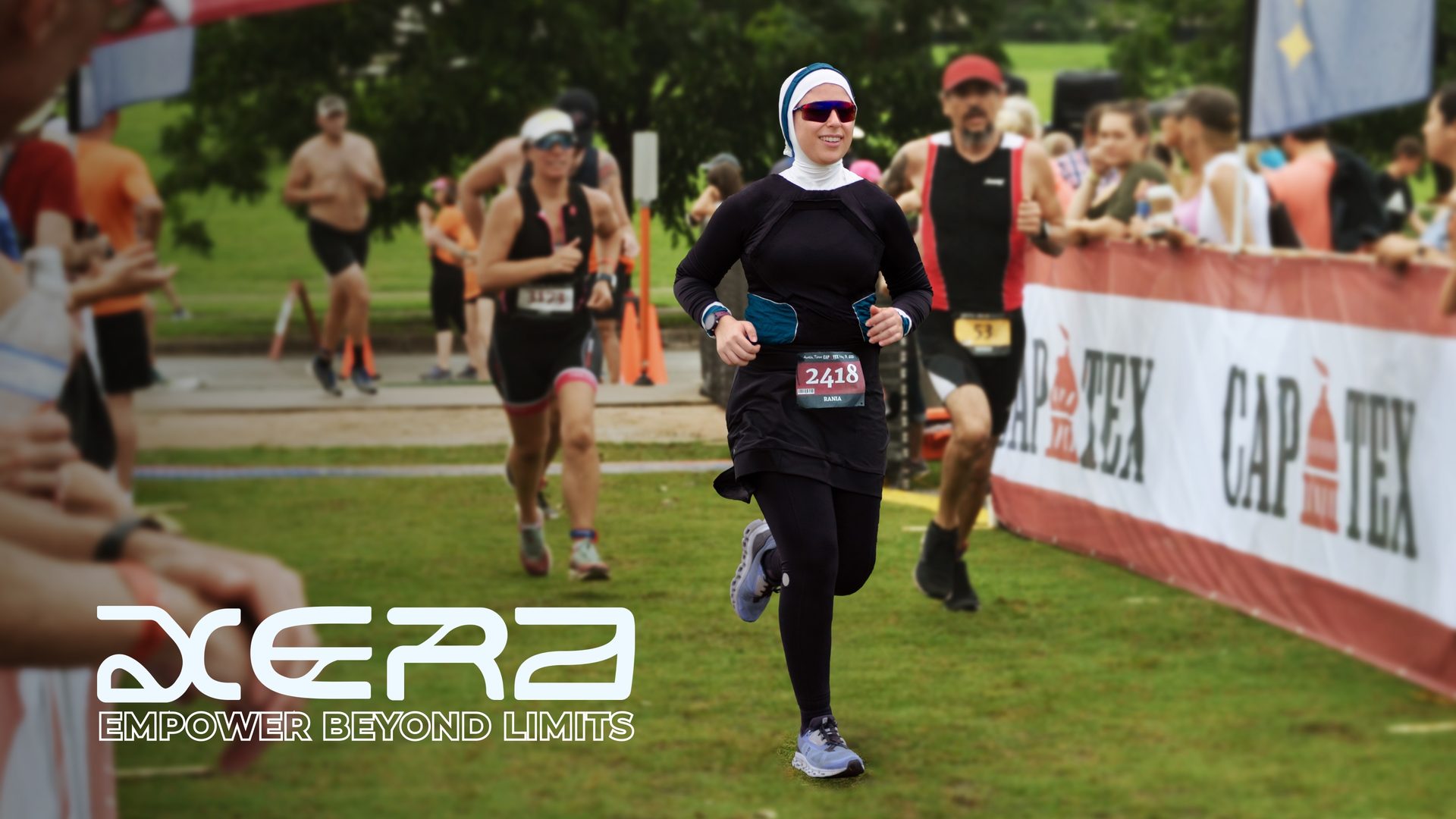
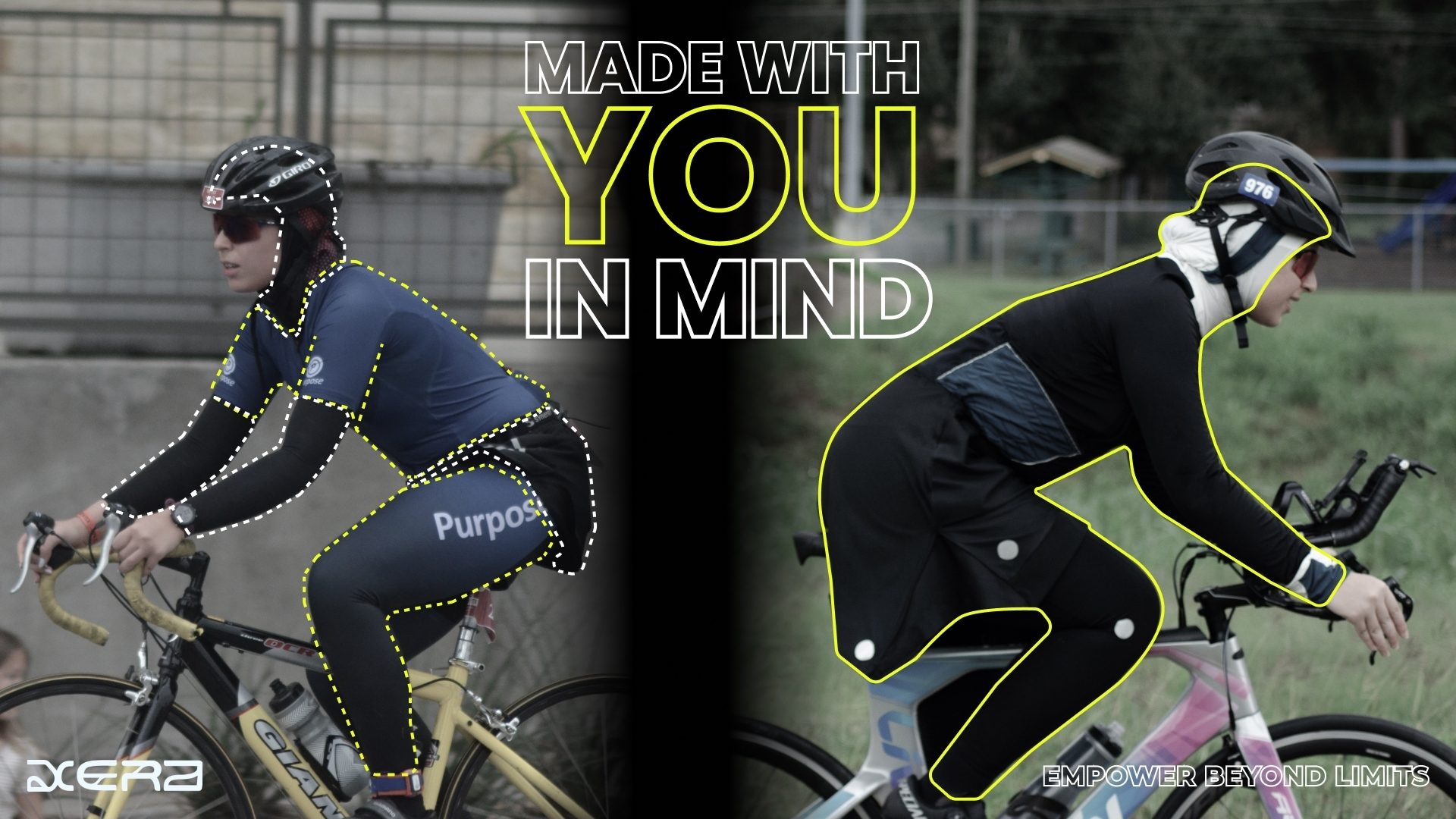

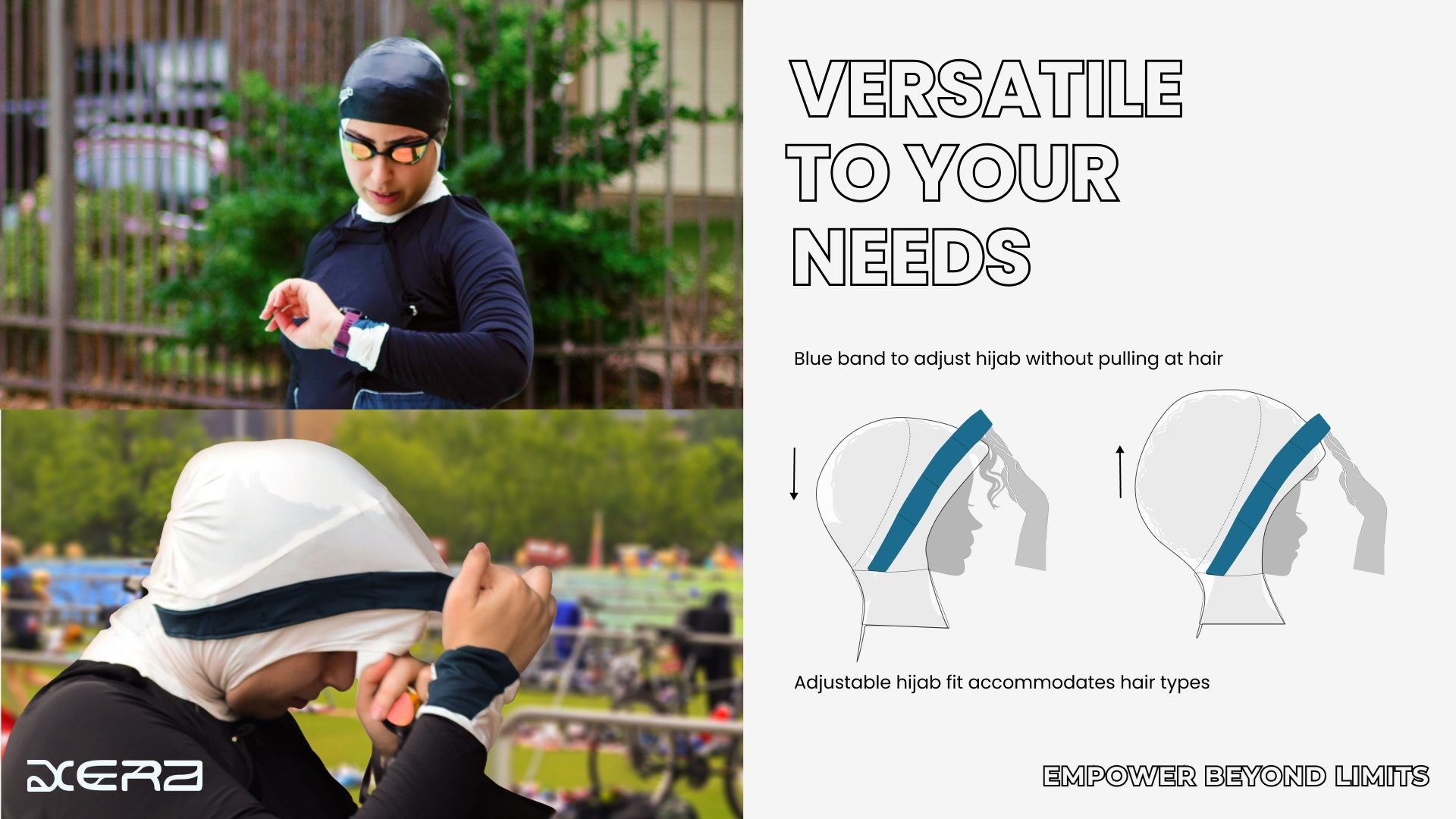
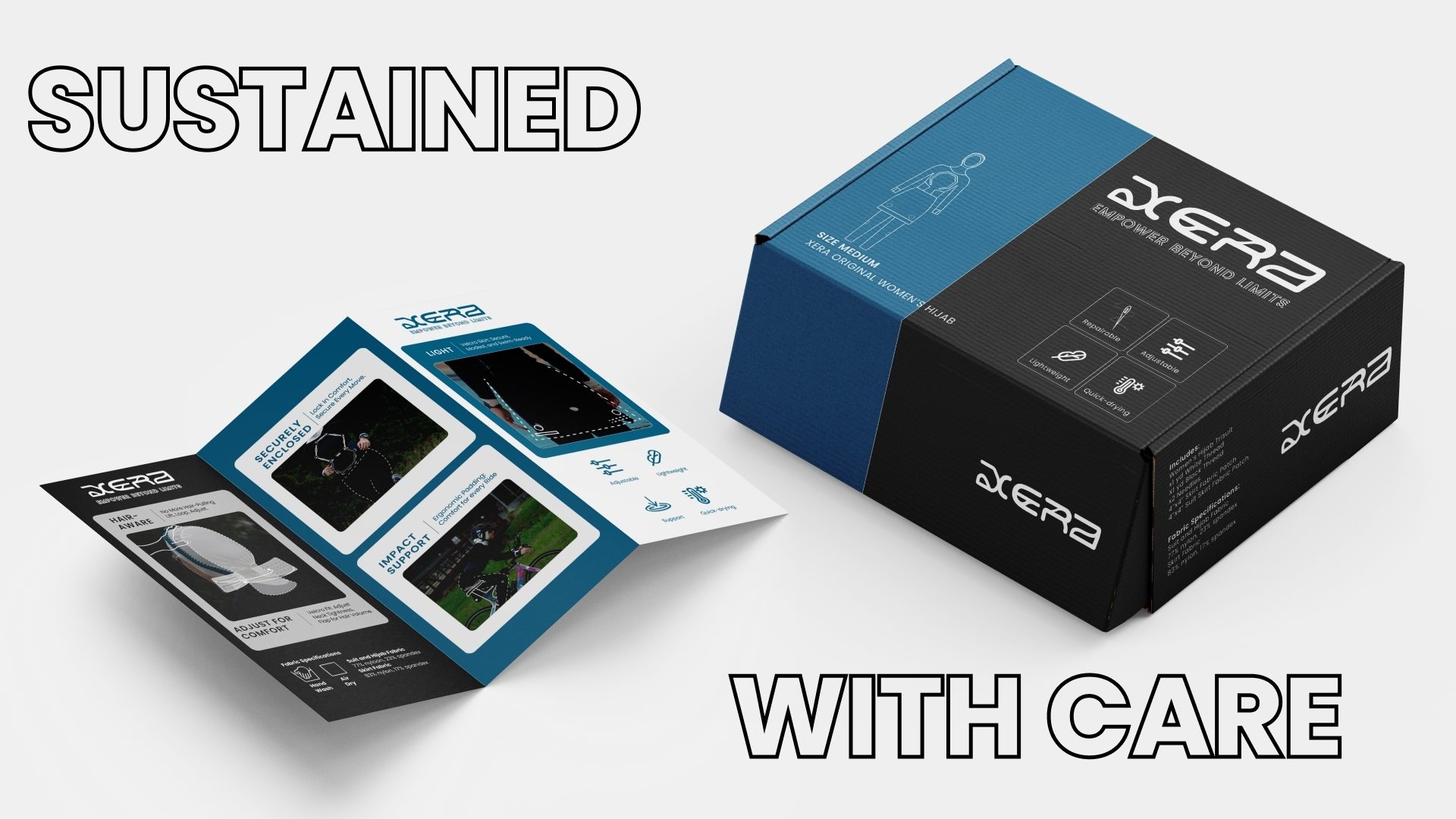
above: Images from the Xera project by Yasmine Almadi
Yasmine Almadi
Project: Xera
Award: Winner in Sportswear Design / Outdoor Sports
The Xera hijabi women’s triathlon suit was designed with ethnic, weight, and hair type differences in mind. An adjustable head covering allows for all types of hair textures and thicknesses to comfortably sit underneath. Modular skirt panels provide comfortable coverage to boost athletes’ confidence. It secures tightly to the body using Velcro points when transitioning to swimming to reduce drag. Nutrition storage seamlessly blends into the back of the suit in line with its futuristic design. The lightweight suit uses quick-drying materials, providing a competitive edge in compliance with cultural standards.
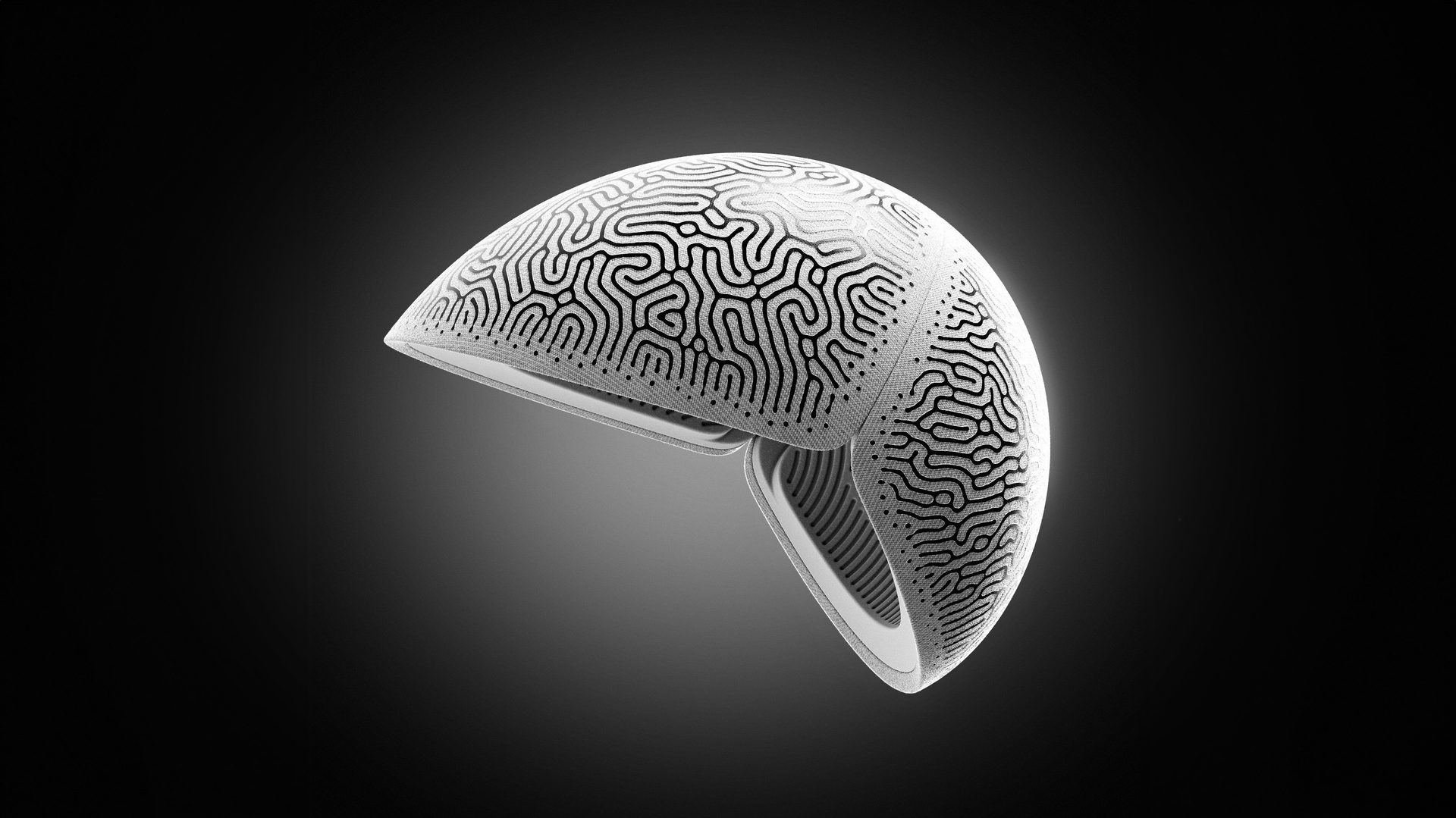
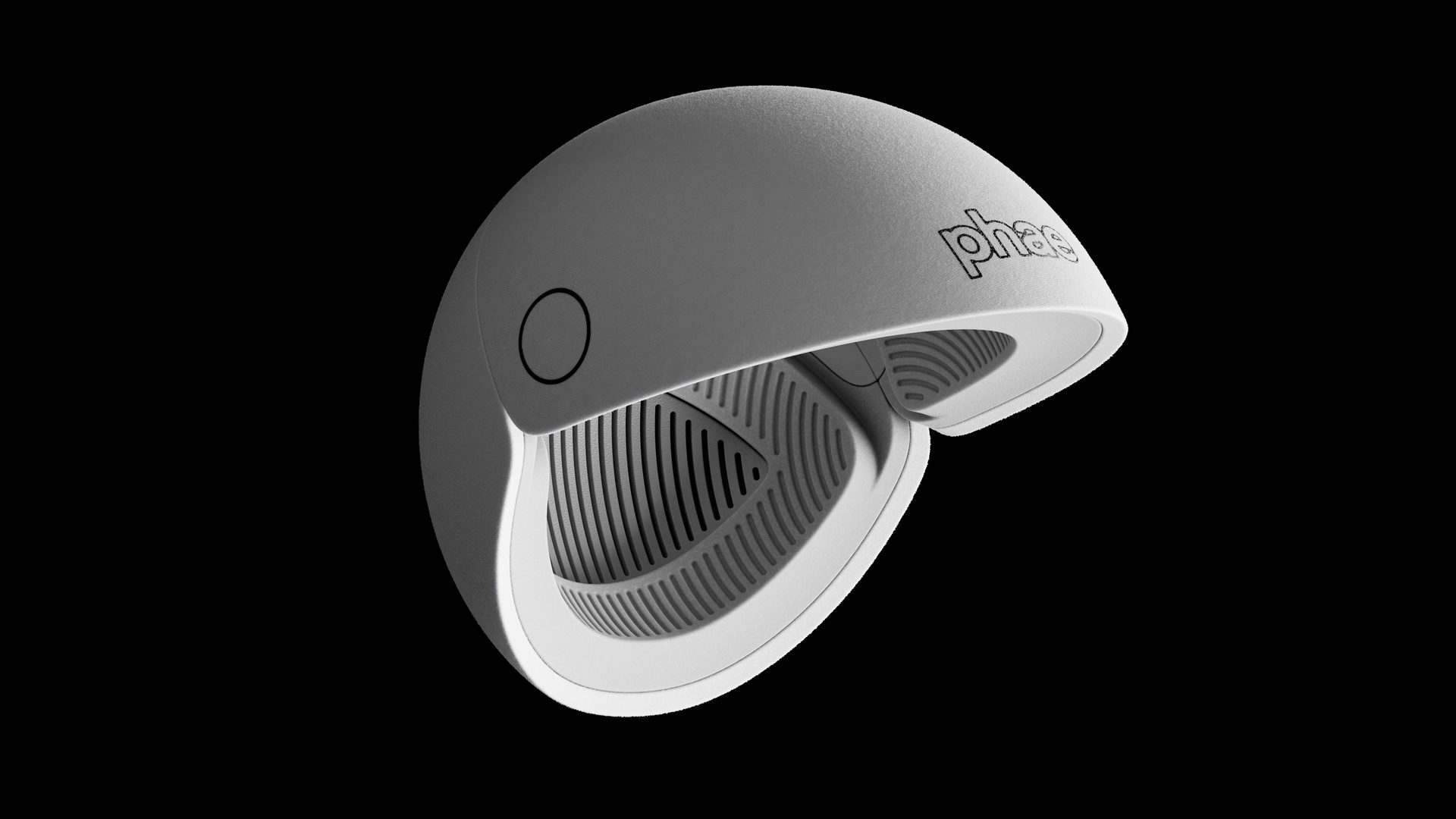
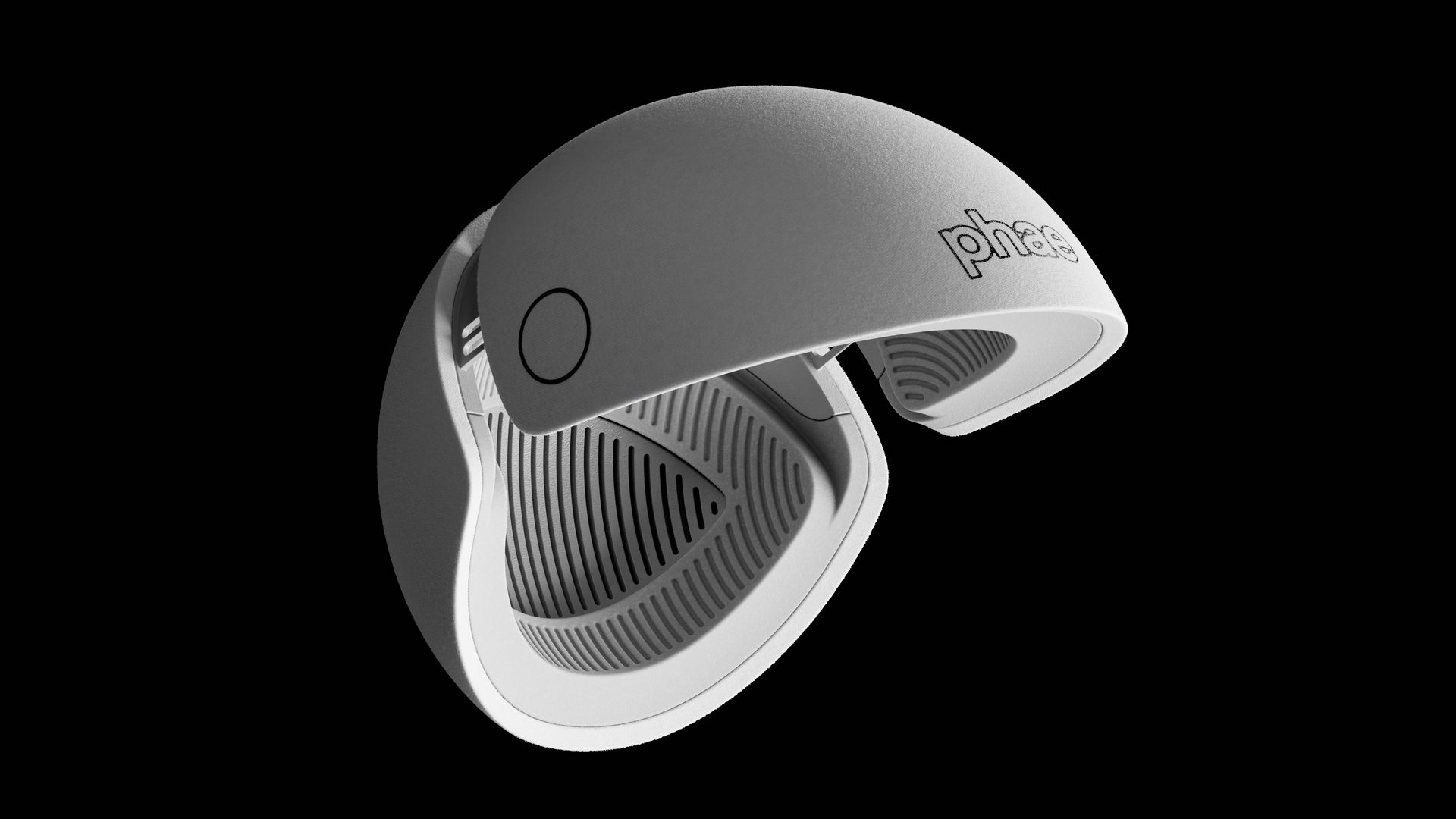
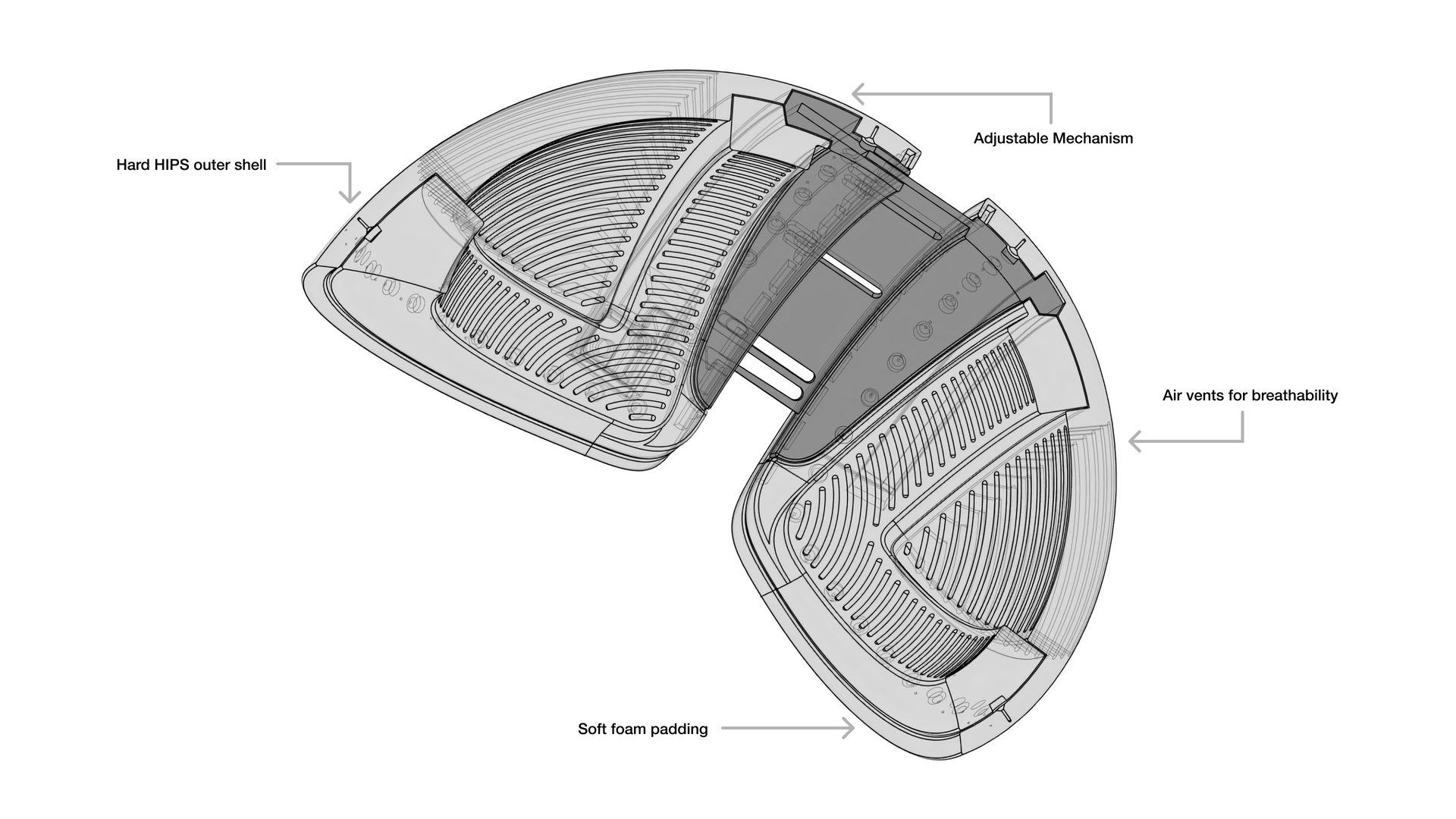
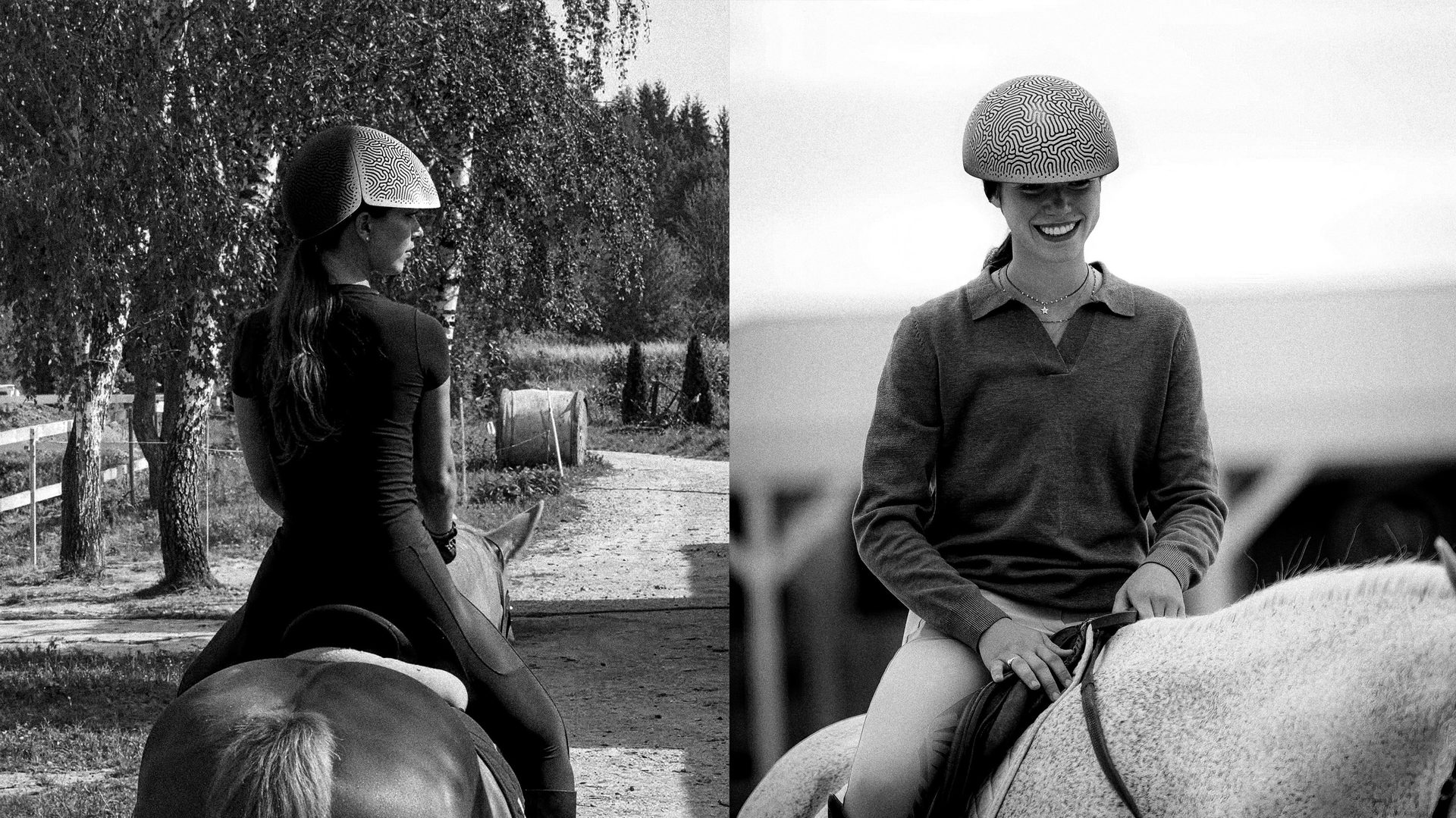
above: Images from the Phae project by Adron Blount
Adron Blount
Project: Phae
Award: Winner in Sportswear Design / Equestrian Sports
The Phae helmet system is a departure from legacy designs that are plagued with issues for equestrian riders. It features a revolutionary chin-strap-free interface, providing a lightweight, breathable, and safe. It is comprised of a two-part shell design that allows for remarkably quick take on and off times. The outer surface is wrapped in a watertight yet breathable mesh, providing the rider with superior airflow. The inside is padded with a dual-foam design that offers protection against both hard and soft impacts.
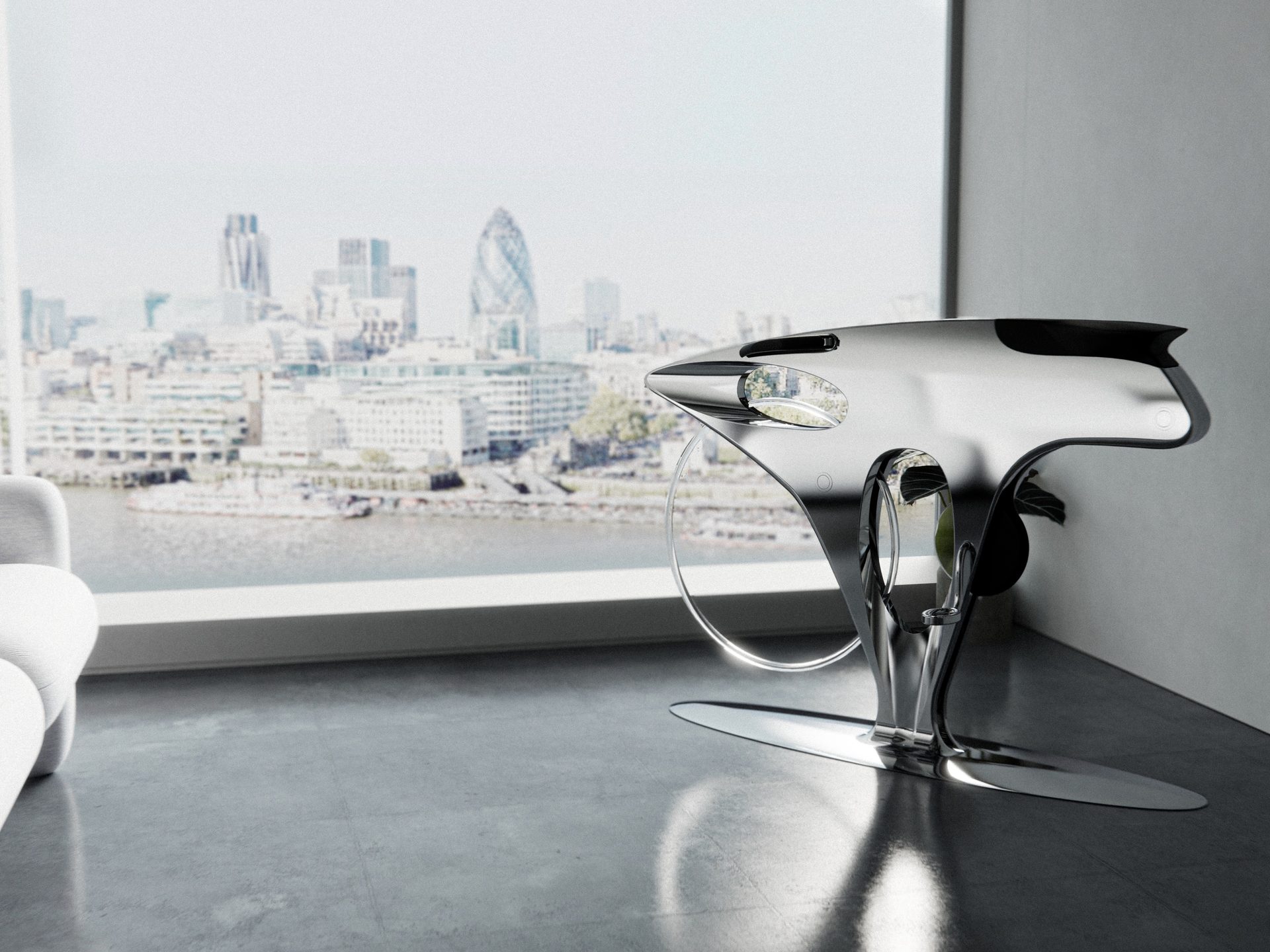
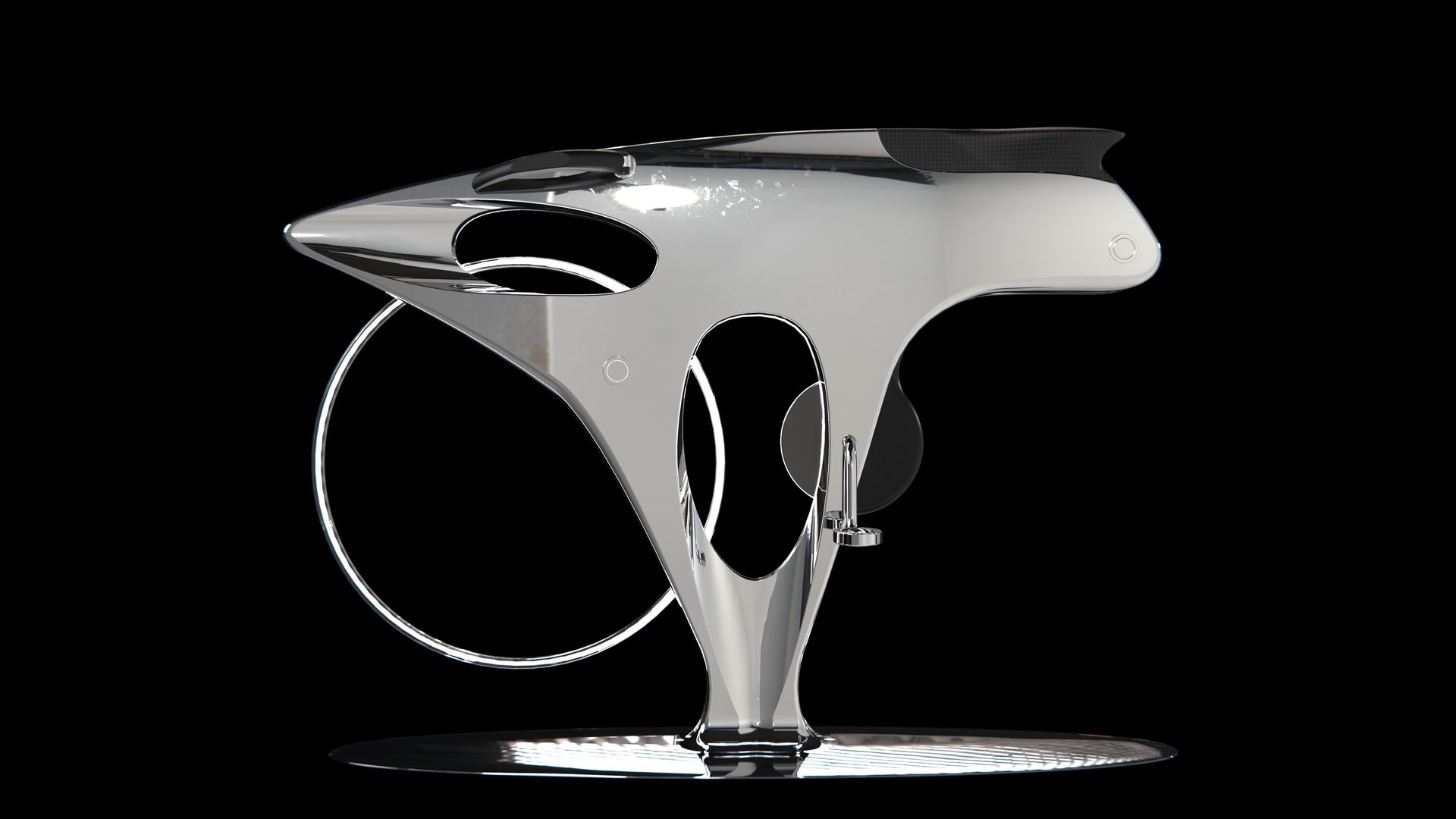
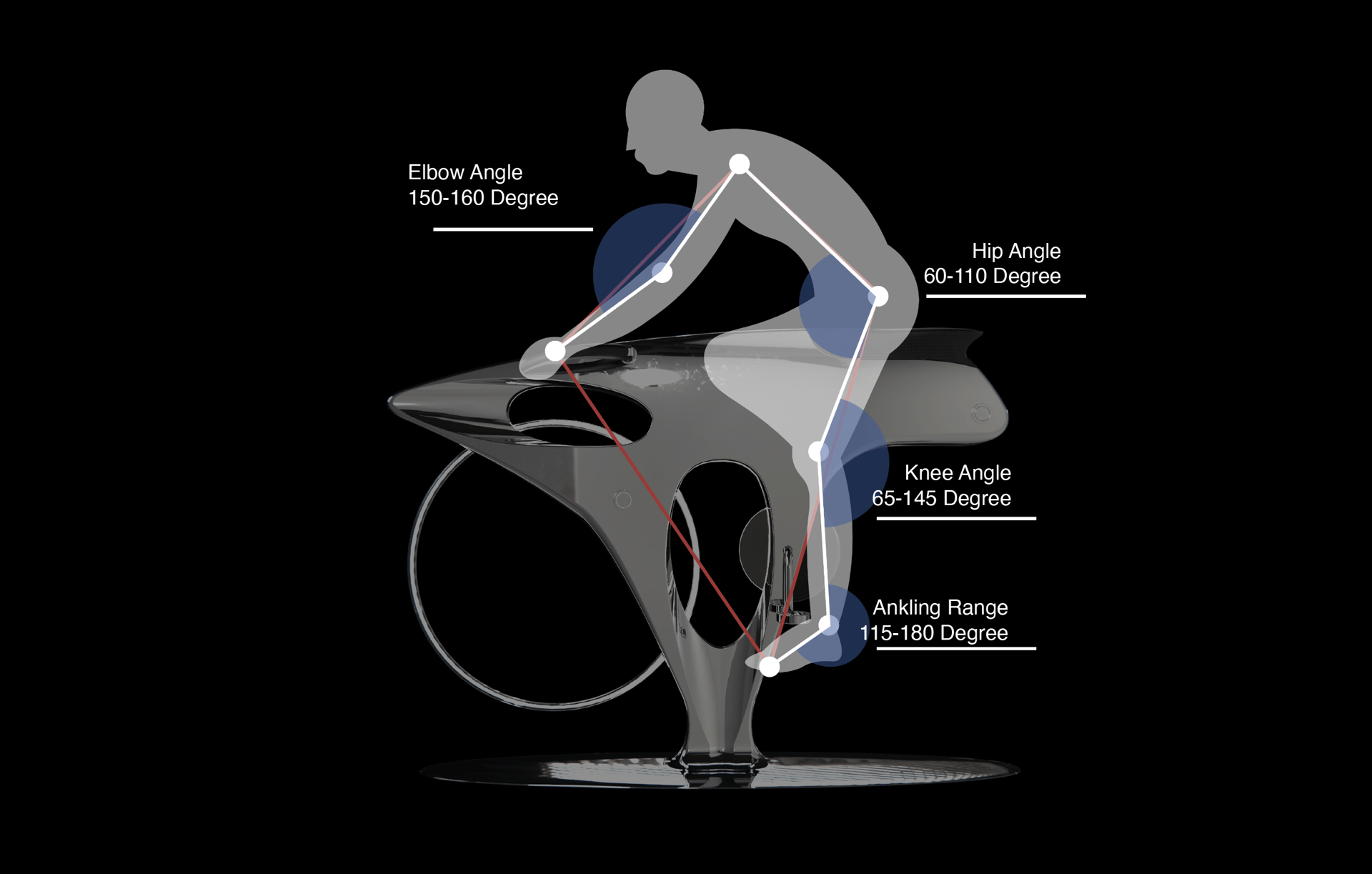
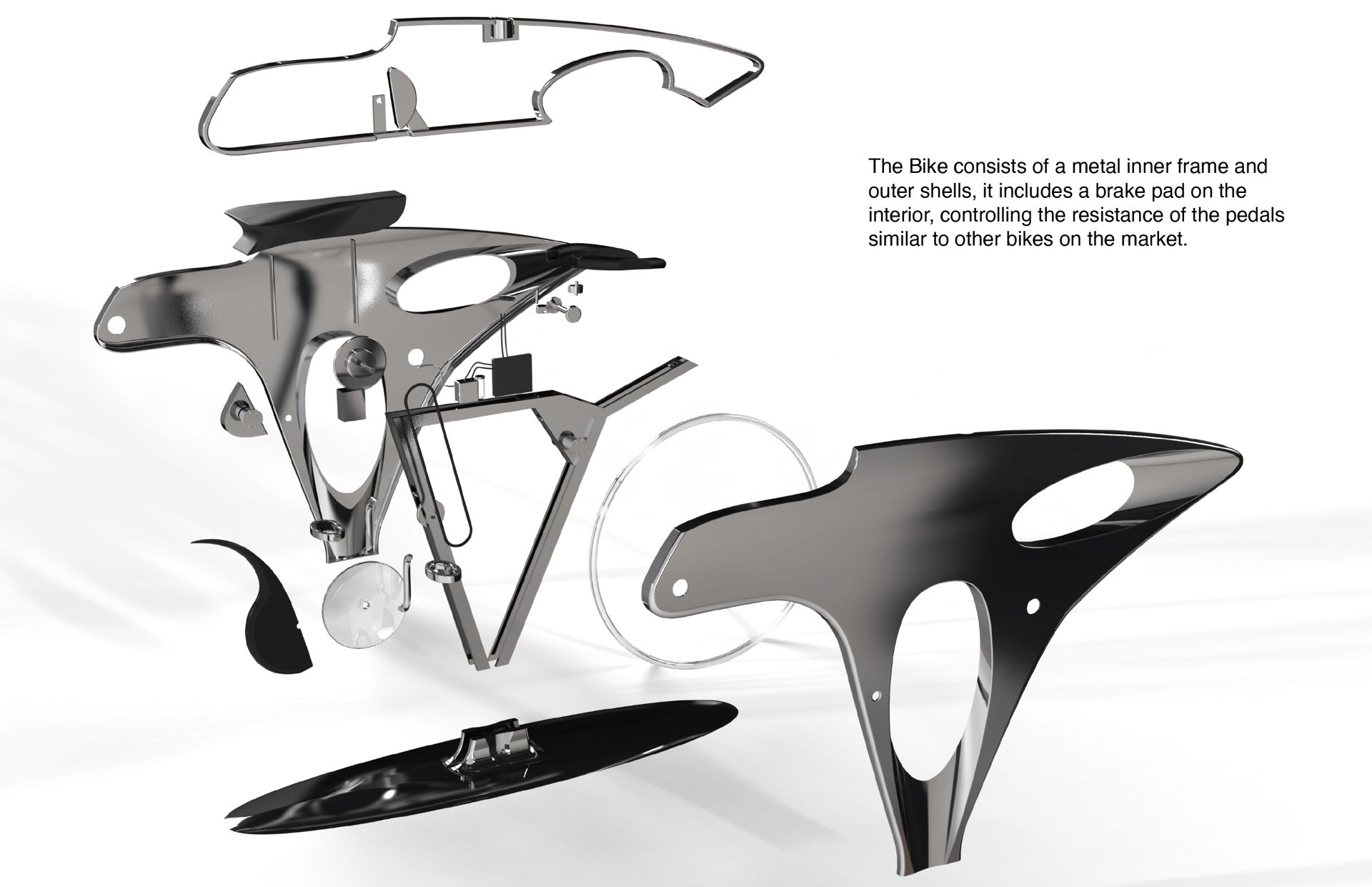
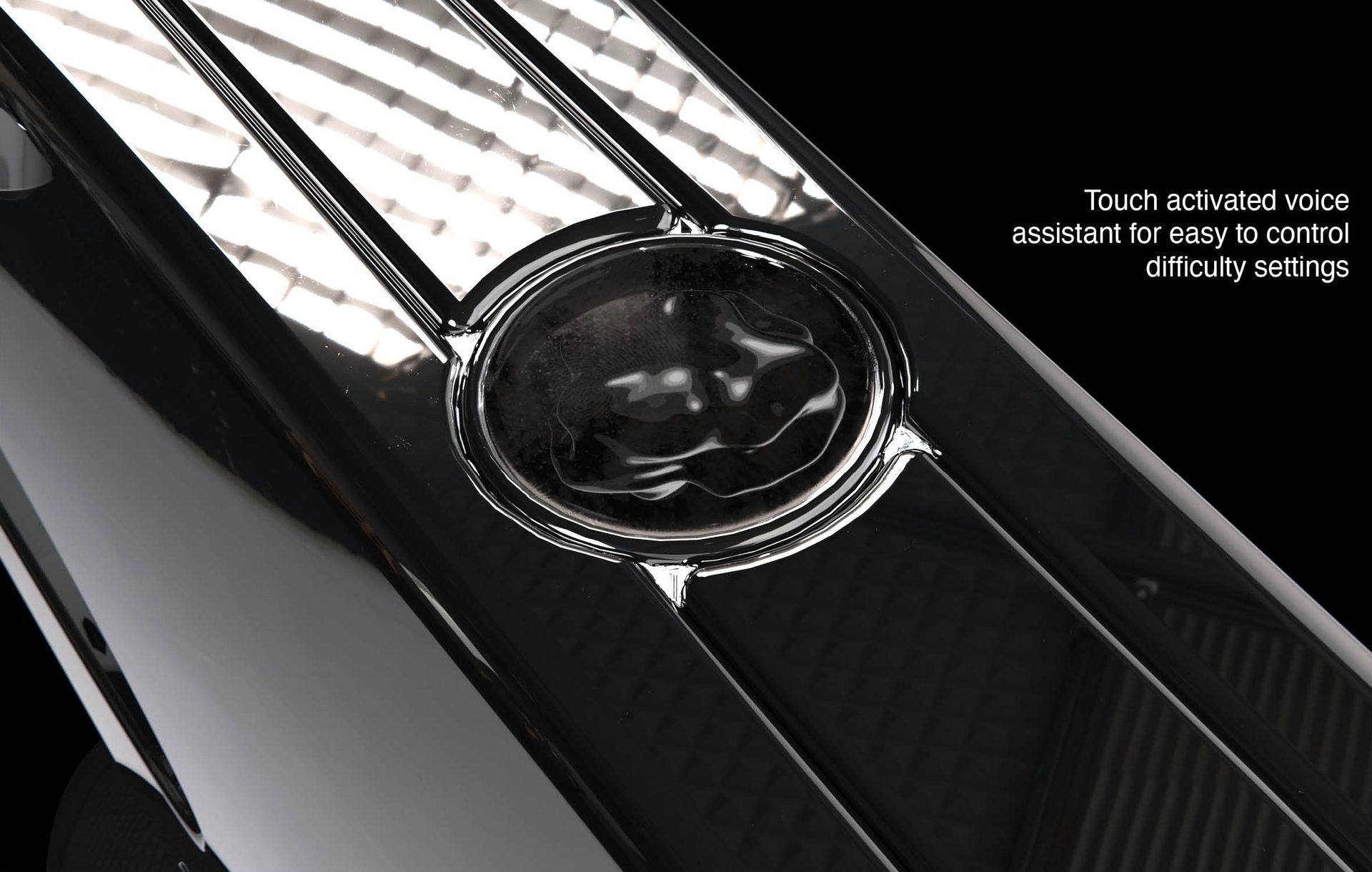

above: Images from the Iris project by brandon burlison
Brandon Burlison
Project: Iris
Award: Winner in Sport Equipment Design / Cycling
Iris heralds a new era in at-home cardio equipment by simplifying the user experience while enriching workout sessions. It enables users to disconnect from daily distractions and truly engage with the ride by removing excessive complexity and clutter. The integration of an onboard virtual assistant and fully automated controls transforms the bike into a sanctuary of respite, introducing a novel experience right in your home. With beauty as a core motivator, Iris is designed to captivate and inspire, encouraging users to embrace their next ride.
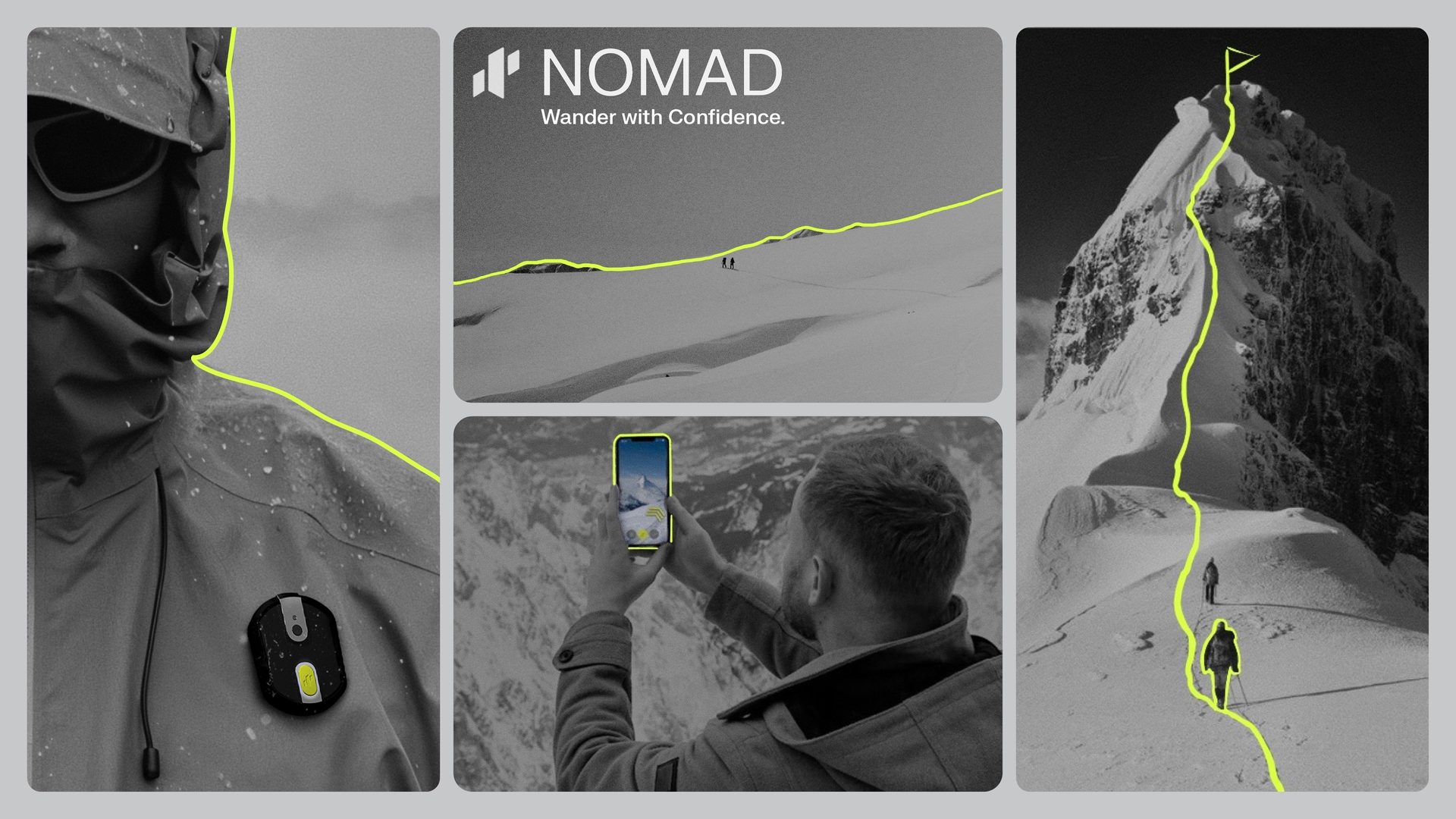


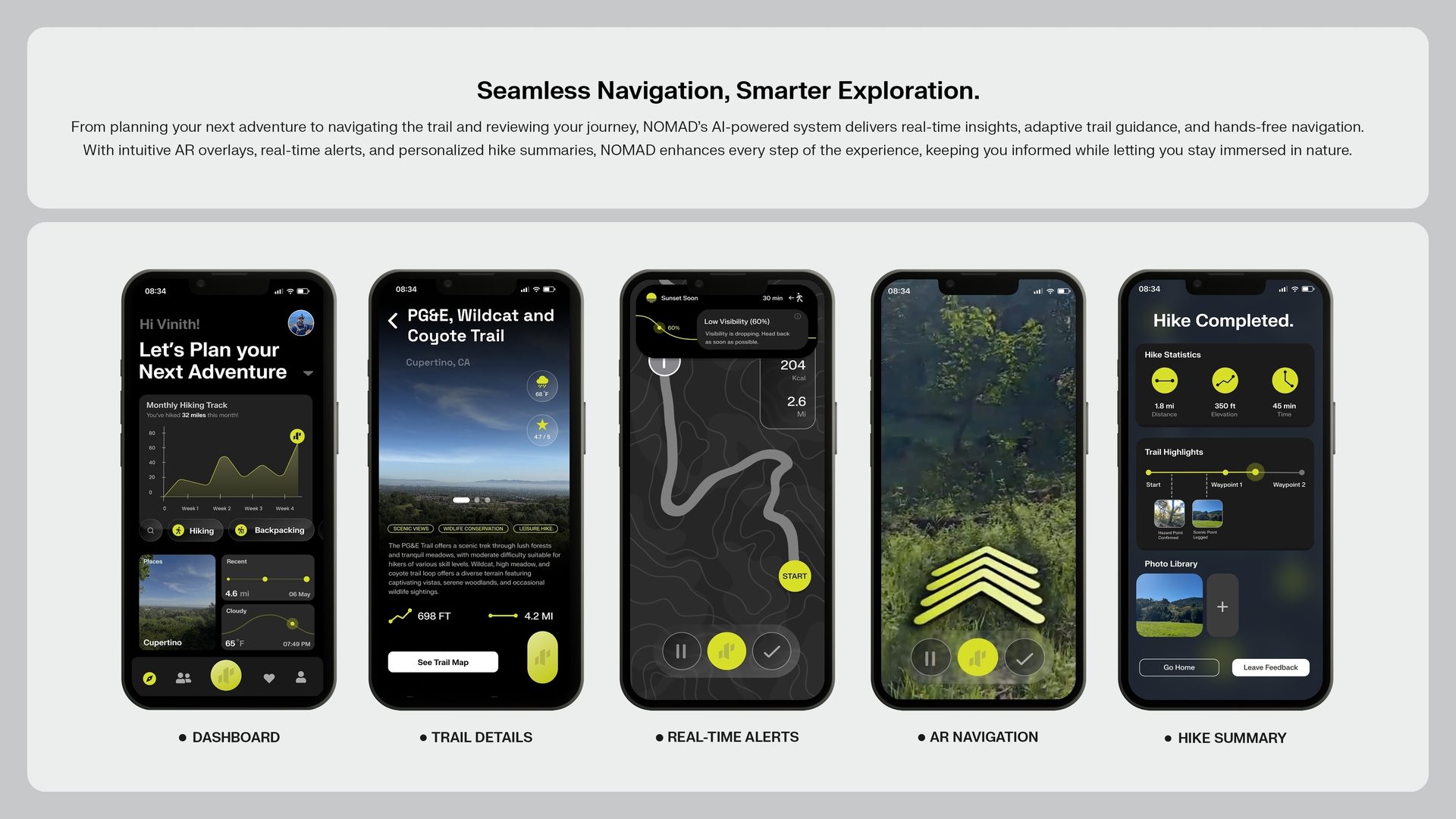
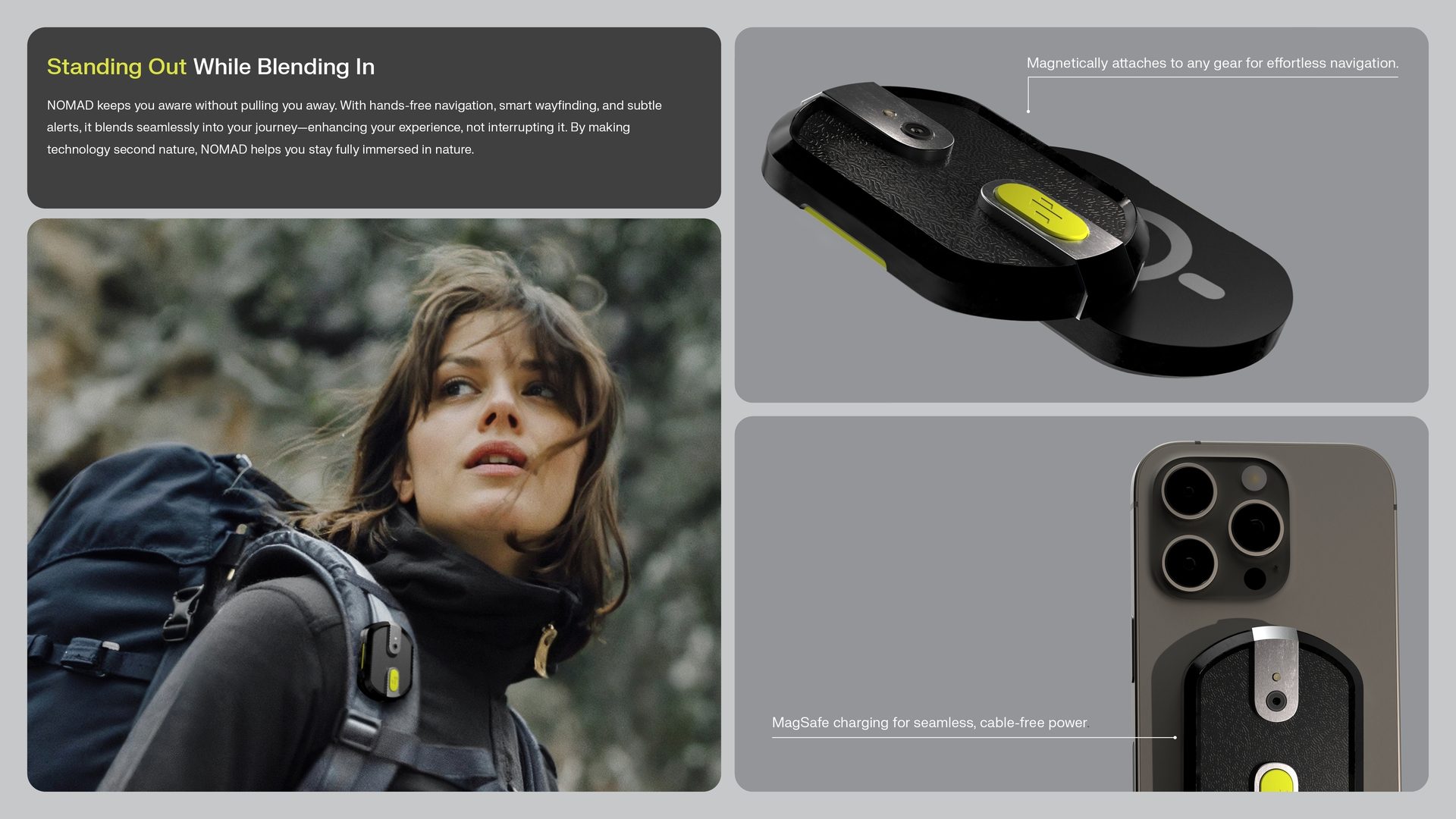
above: Images from the Nomad Projecct by Varshini Chouthri
Varshini Chouthri
Project: NOMAD
Awards: Winner in Sportswear Design / Mountaineering, Climbing, Hiking; and Sports Gadgets
NOMAD reimagines outdoor navigation through a modular, wearable, and AI-powered system minimizing screen dependency and supporting immersive exploration. Unlike static GPS apps, NOMAD adapts intelligently by learning from trail conditions, weather, and user behavior using a downloaded offline agent package prepared before each hike. During the hike, the system provides offline augmented reality navigation, ensuring users stay confidently on track, even in remote areas with no service. The companion pin delivers real-time, hands-free feedback through subtle vibrations and short audio cues, guiding users through turns, waypoints, and upcoming changes.
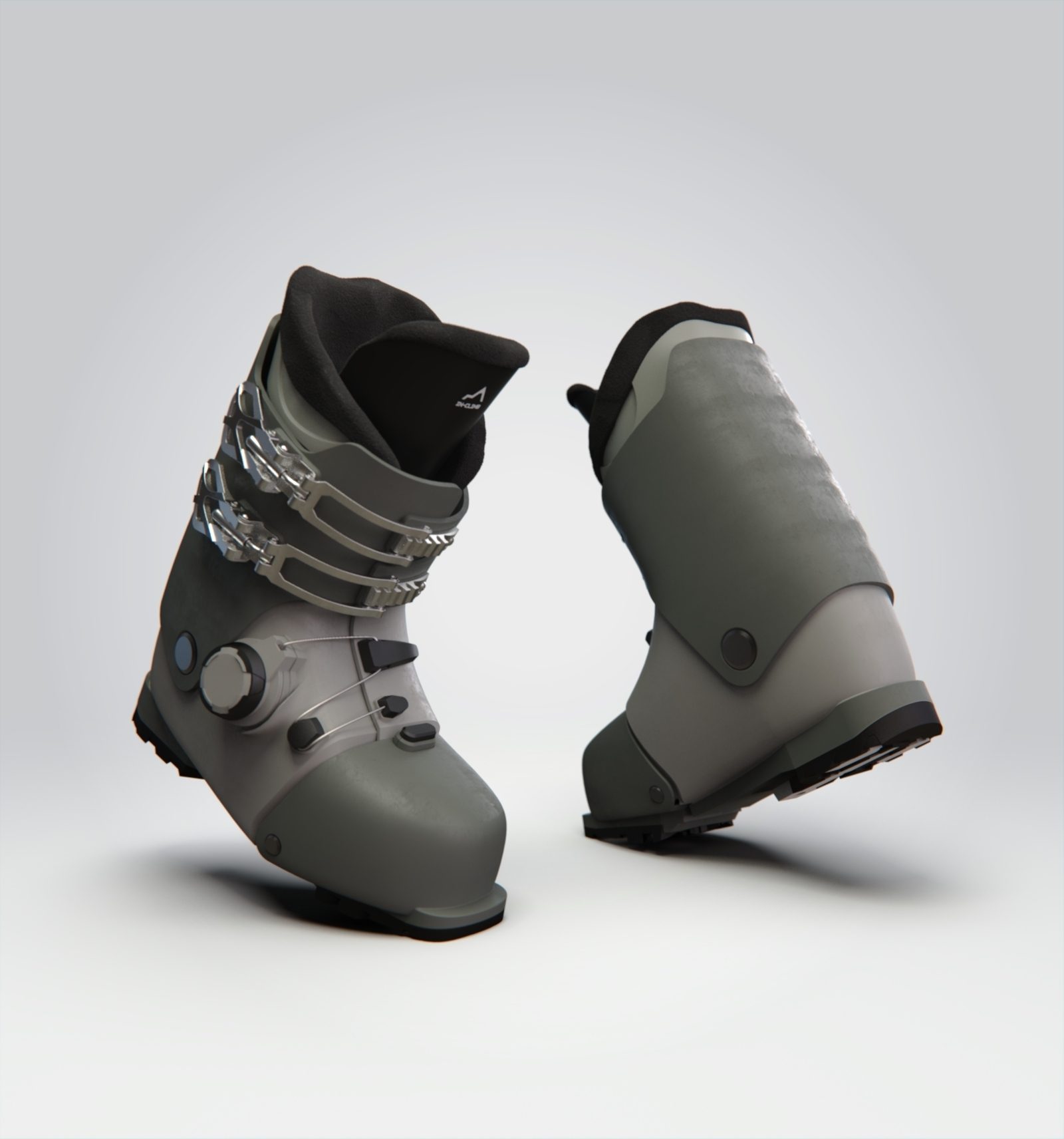
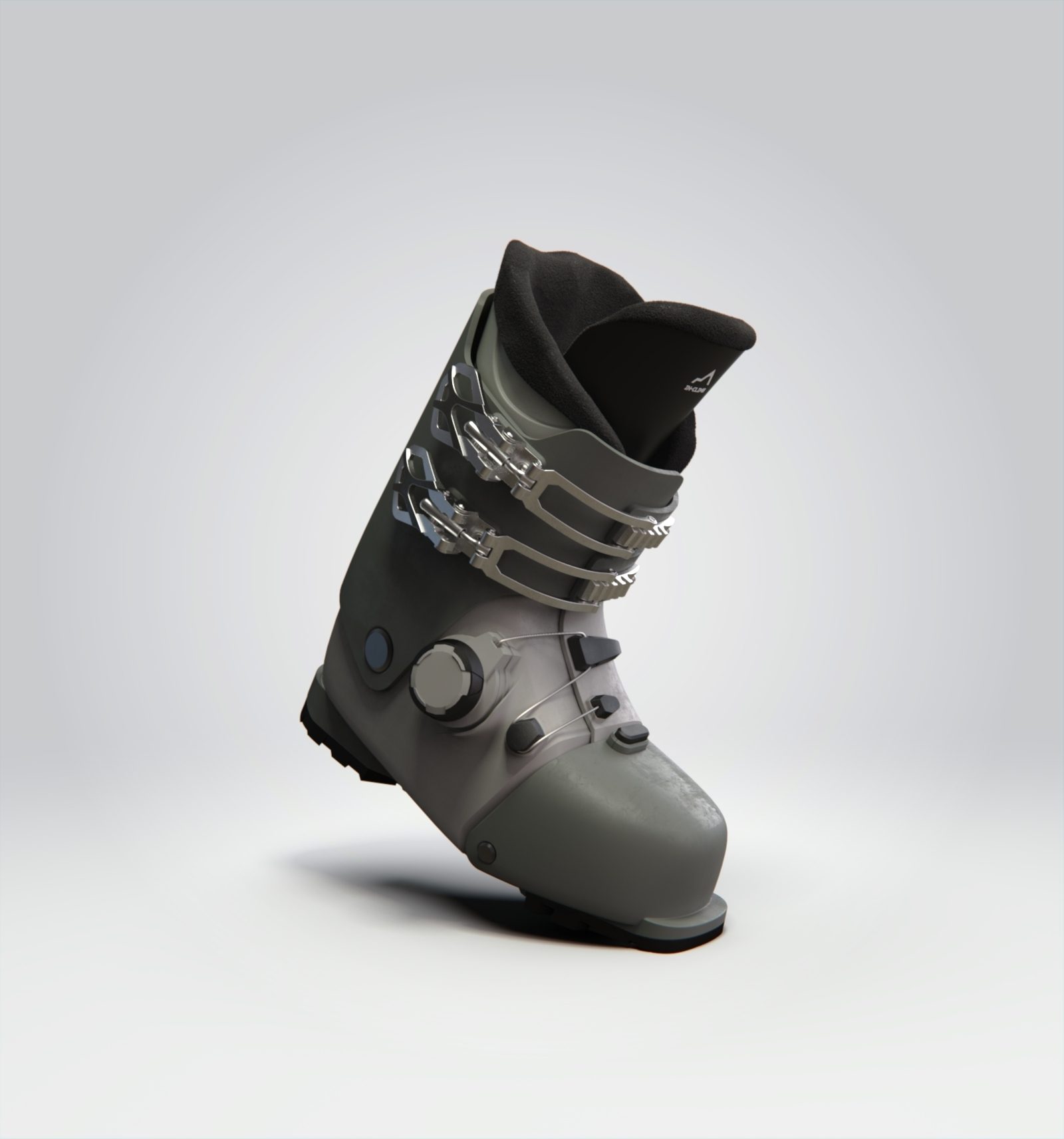
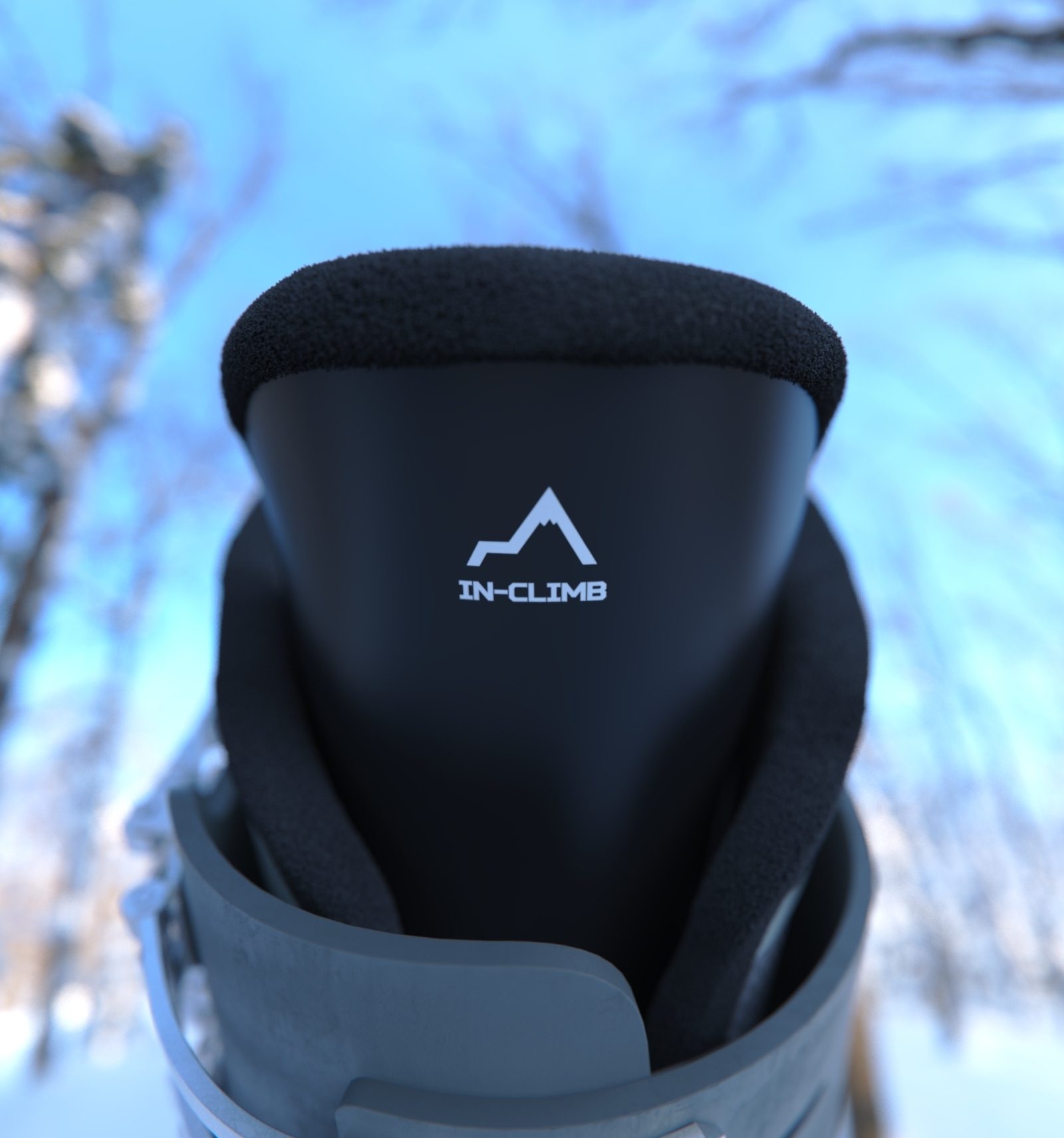
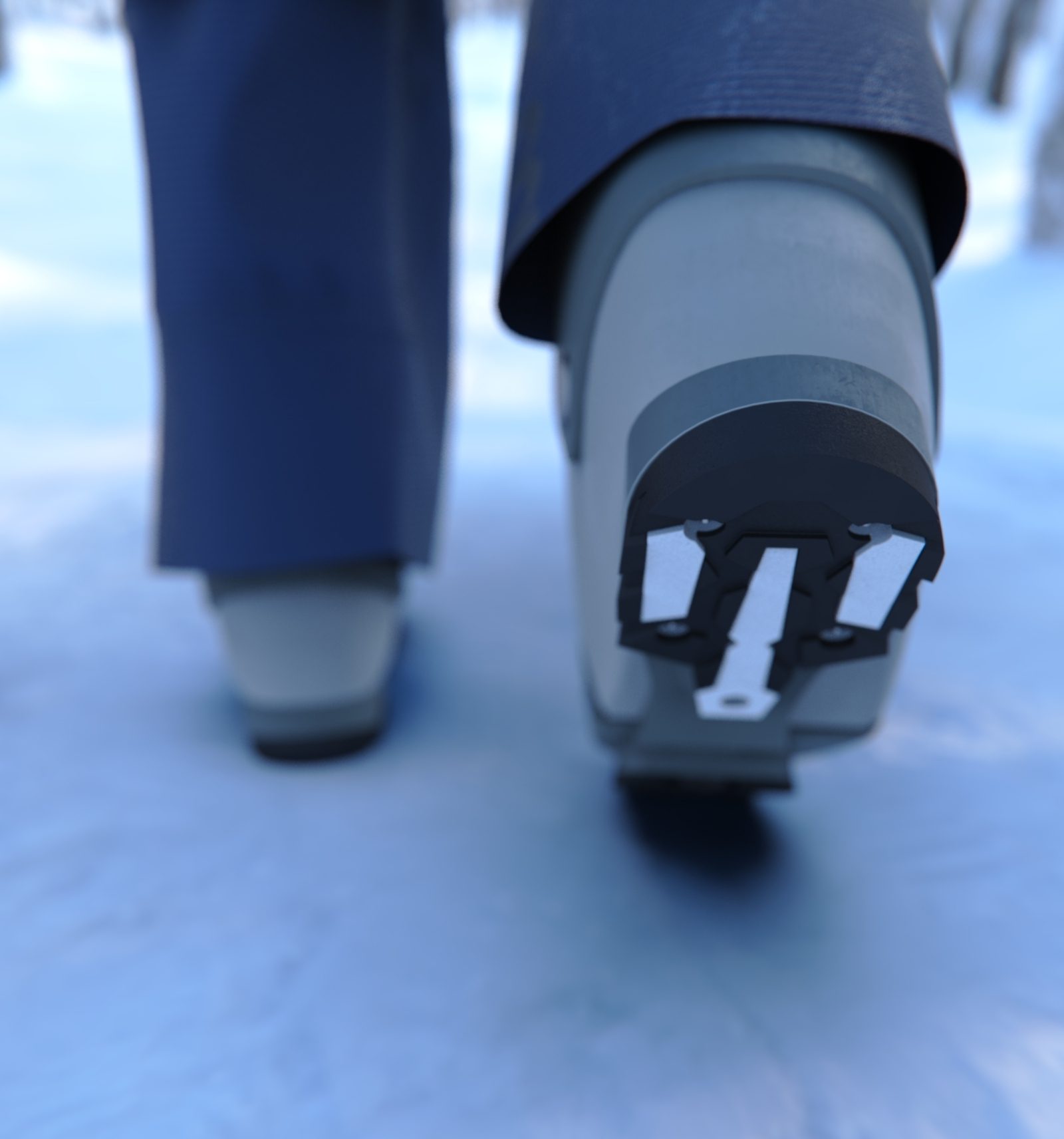

above: Images from the In-climb project by gerardo de los reyes
Gerardo De Los Reyes
Project: In-Climb
Awards: Winner in Sportswear Design / Snowsports
In-Climb is a ski boot designed for skiers who prioritize comfort, mobility, and usability without sacrificing performance. Traditional ski boots are rigid and uncomfortable when walking, especially in resort settings where skiers must move between lifts, lodges, and terrain. In-Climb solves this with a jointed toe cap pivoting at the MTP joint, allowing the forefoot to flex naturally. A simple locking mechanism ensures stability while skiing and disengages for greater mobility when walking. The boot is compatible with standard ski bindings, ensuring accessibility without the need for specialized gear.
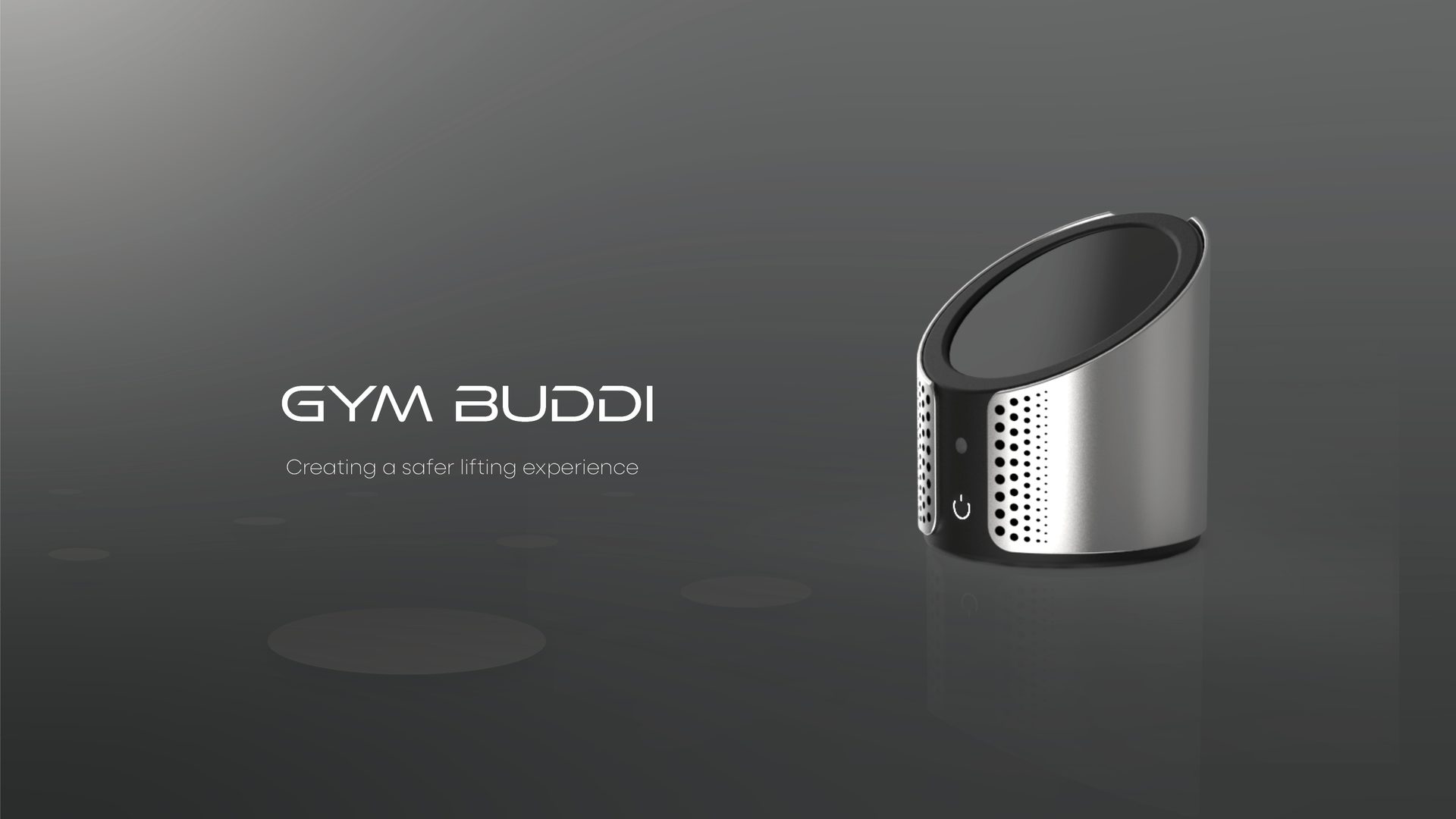
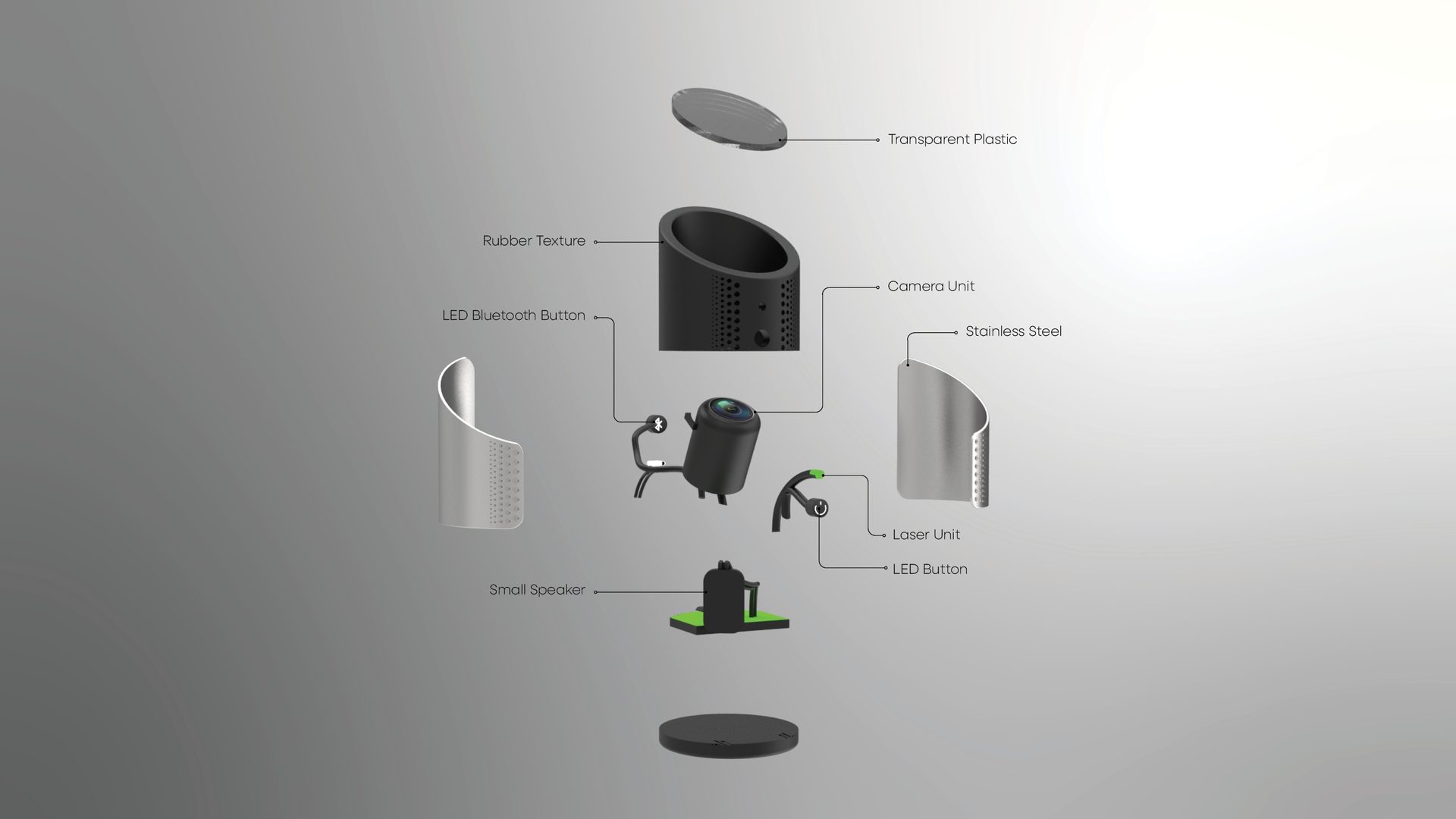
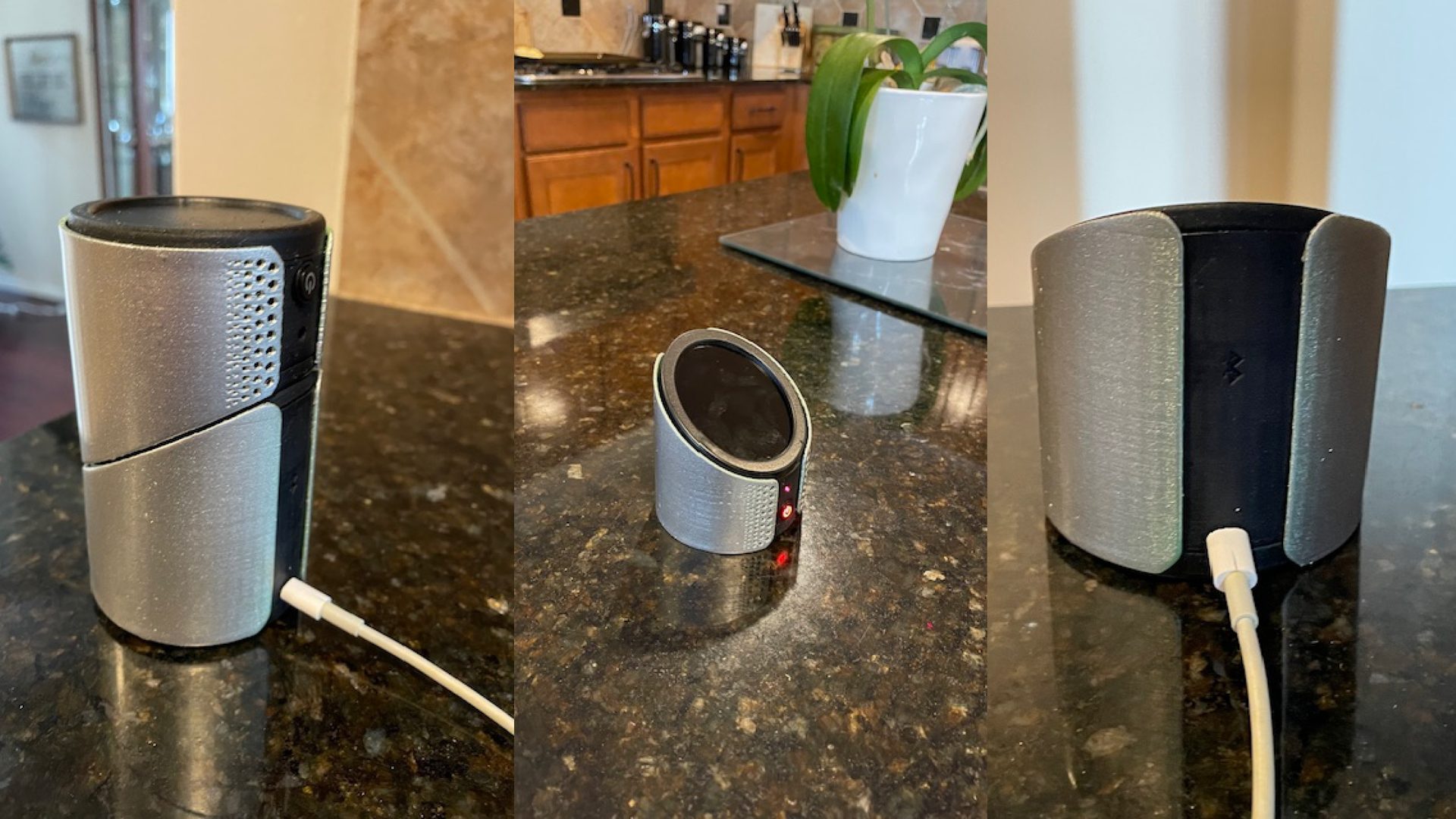
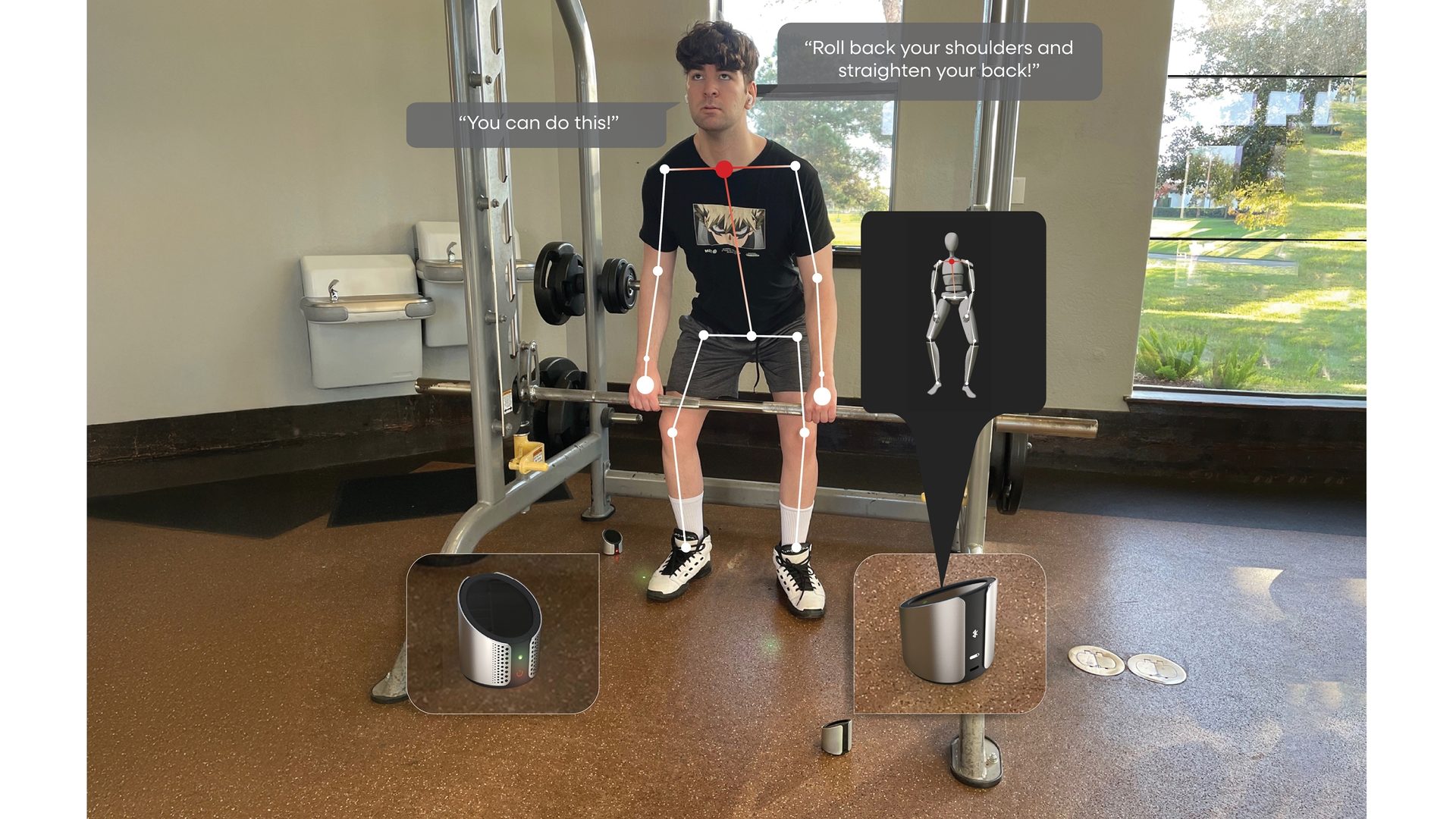

above: Images from the GYM BUDDI project by JUSTIN HIGGINBOTHAM
Justin Higginbotham
Project: GYM BUDDI
Awards: Winner in Sport Equipment Design / Urban Life; Outdoor Sports; and Strength Training
GYM BUDDI innovates by handling privacy in public spaces while interacting with the user during strength training. GYM BUDDI records live footage of the user and translates the footage into an augmented reality 3D space. It places a generic 3D dummy model over the user to prevent other gym-goers from being unintentionally recorded. At the same time, the AI motion capture footage is analyzed, and live audio feedback is provided to the user through the device or headphones. This ensures the user's lifting form is correct and helps to prevent injuries.

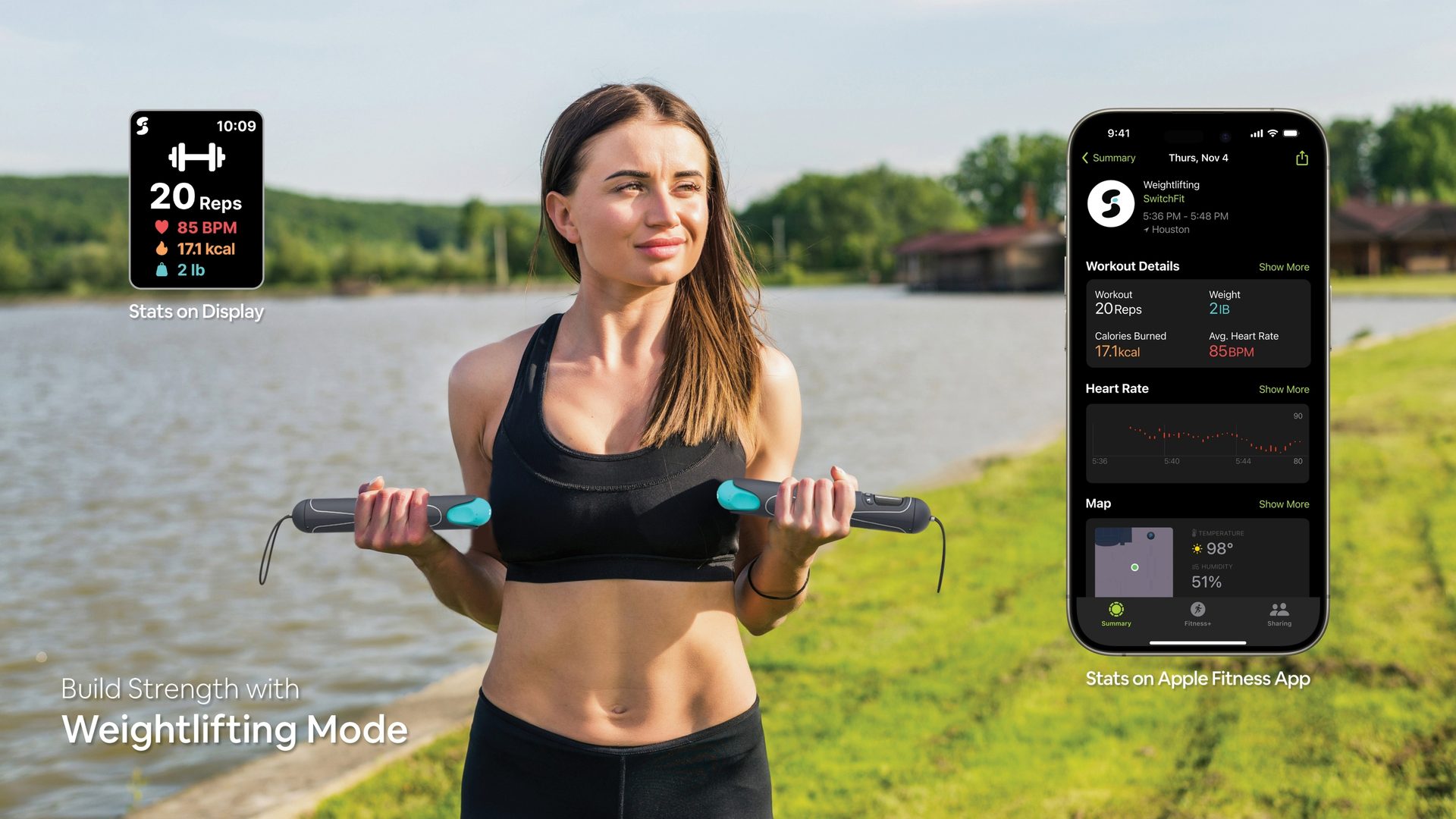
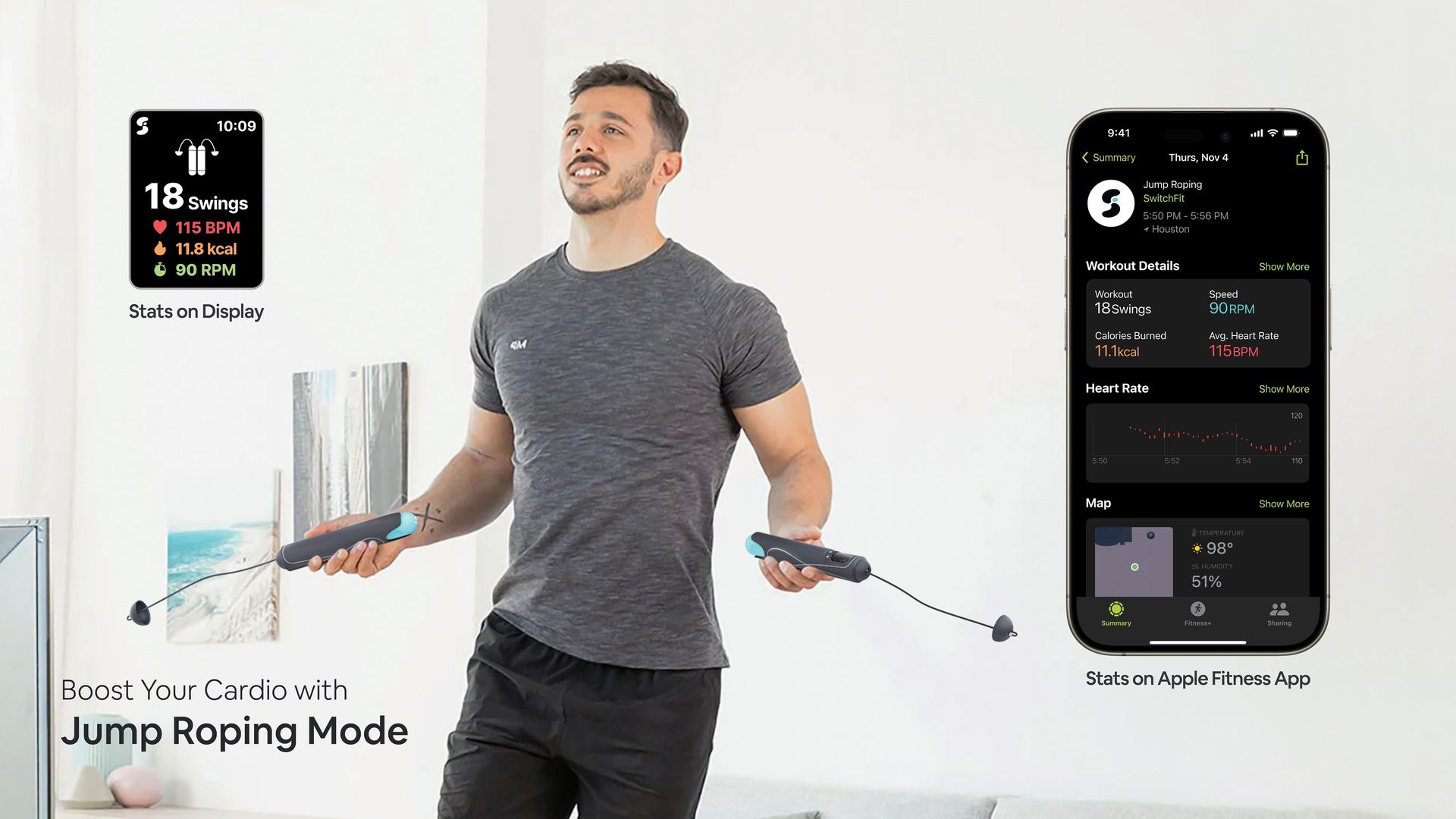


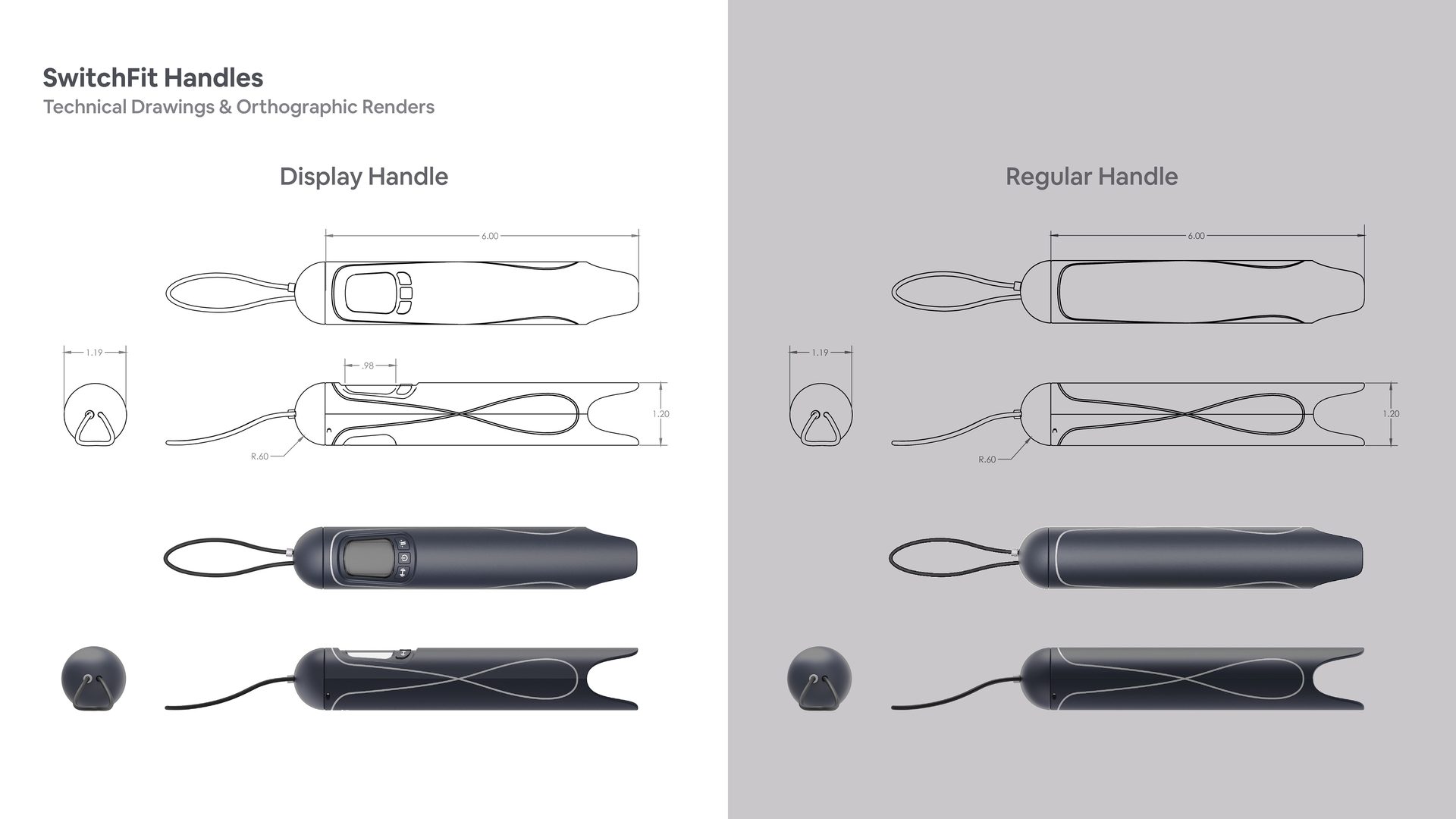
above: Images from the switchfit Cordless Jump Rope + Weight Bars project by brandon burlison
Di Nguyen
Project: SwitchFit Cordless Jump Rope + Weight Bars
Award: Winner in Sport Equipment Design / Urban Sports
SwitchFit seamlessly combines two popular urban exercises — jump roping and weightlifting — into one versatile tool. The smart handle tracks workout stats and offers two different modes, allowing users to easily switch between cardio and strength training. With adjustable weights (one to three pounds, plus optional four- and five-pound weights), users can customize the intensity of their workouts. The device also syncs with existing fitness apps to track progress, set goals, and send reminders to motivate users. Compact and space-efficient, SwitchFit is designed for busy, urban lifestyles.

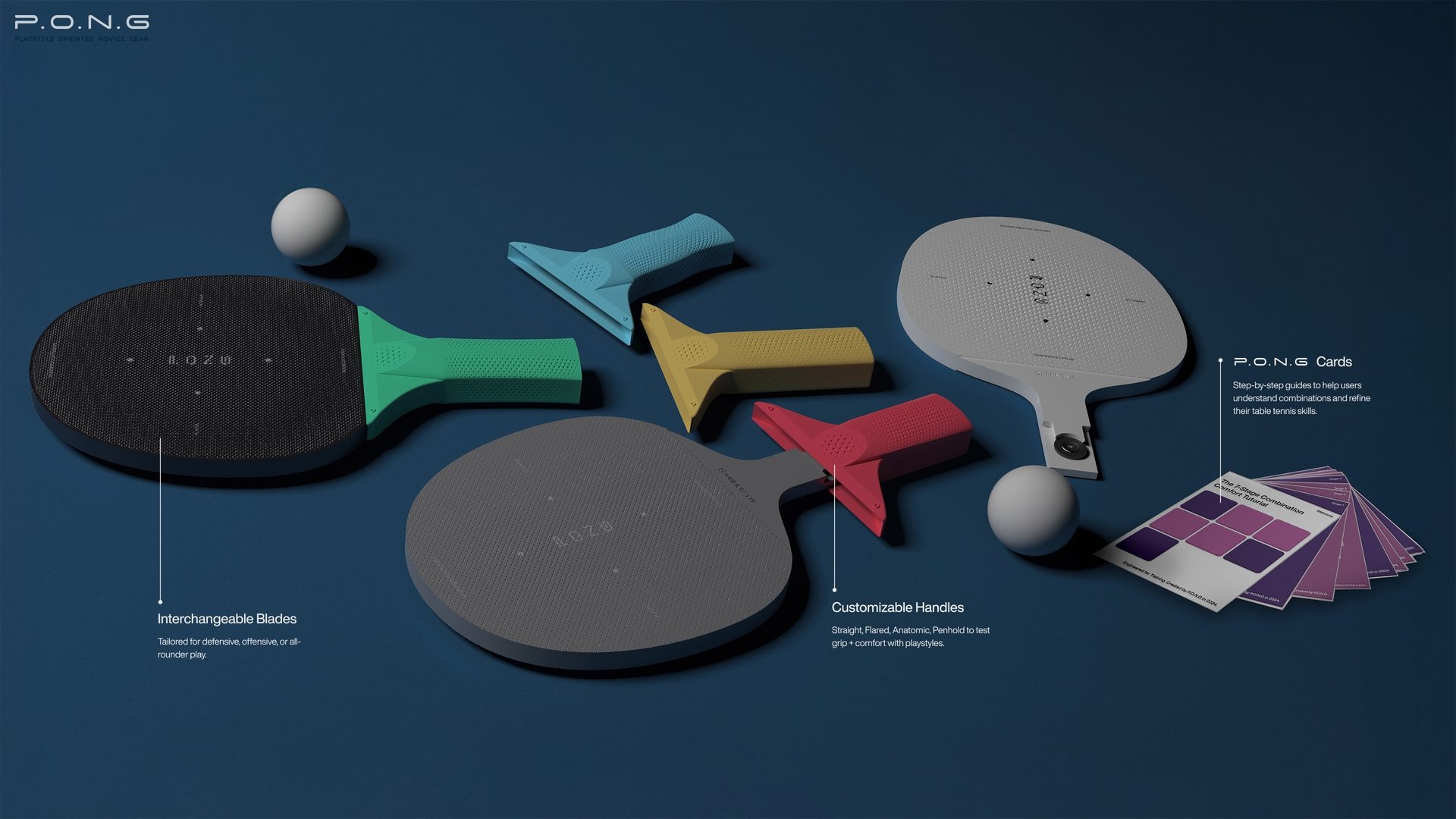


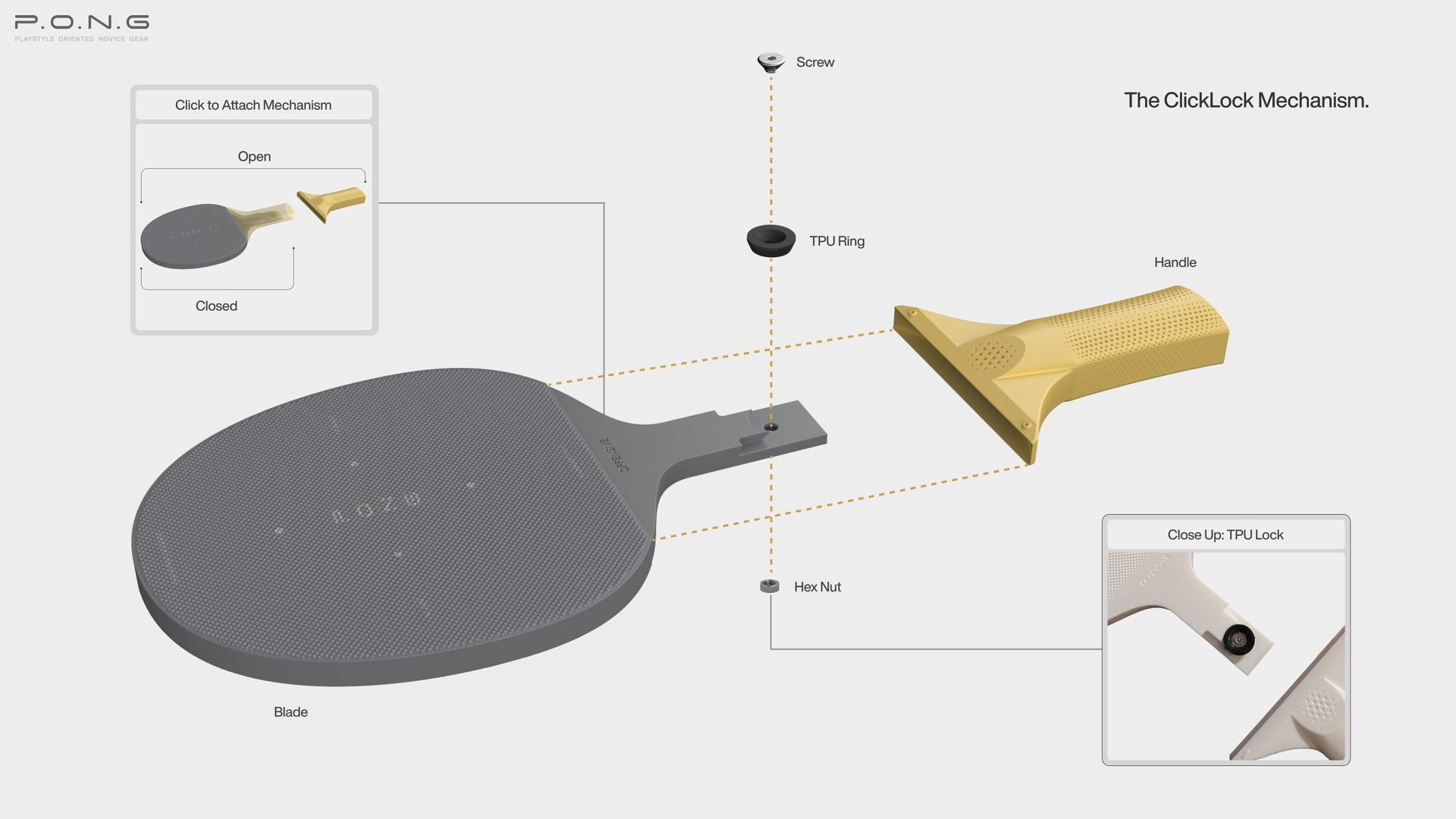
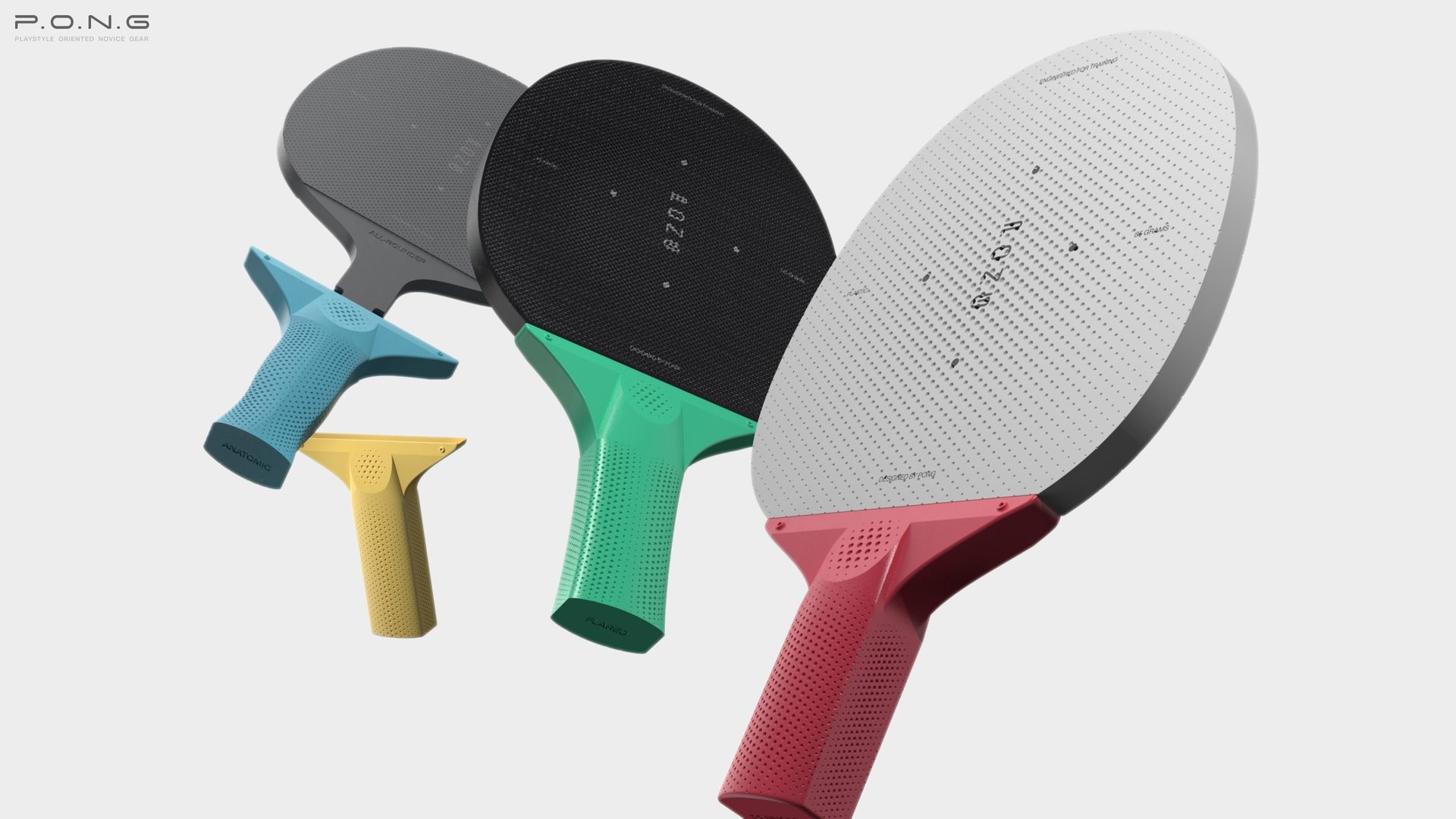
above: Images from the P.O.N.G: Playstyle Oriented Novice Gear project by Srivats Srinivasan
Srivats Srinivasan
Project: P.O.N.G: Playstyle Oriented Novice Gear
Award: Winner in Sport Equipment Design / Racket Sports
P.O.N.G: Playstyle Oriented Novice Gear is an innovative table tennis training system designed for beginners to discover and refine their play style. By offering a modular blade and handle system, P.O.N.G allows users to experiment with 12 unique playstyle combinations, bridging the gap between learning and personalization. The system features three blade types and four handles, providing users with a structured yet customizable experience. Designed to remove the trial-and-error costs associated with purchasing multiple rackets, P.O.N.G provides an intuitive way for players to explore grip comfort, shot precision, and playstyle adaptability.
More Hines College Stories

On May 8, the Hines College celebrated the Class of 2025 – 195 graduates whose academic experience is defined by resilience and adaptability. Many of these students started their academic journeys under unexpected circumstances at the height of the COVID-19 pandemic, emerging stronger and more prepared to tackle the demands of their future professional careers. As they close this transformative chapter, several graduates reflect on their unique experiences.

This spring, the Association of Collegiate Schools of Architecture (ACSA), in partnership with Columbia University’s Temple Hoyne Buell Center for the Study of American Architecture, named University of Houston Gerald D. Hines College of Architecture and Design instructional assistant professor Daniel Jacobs as a recipient of the prestigious 2025 Course Development Prize in Architecture, Climate Change, and Society.
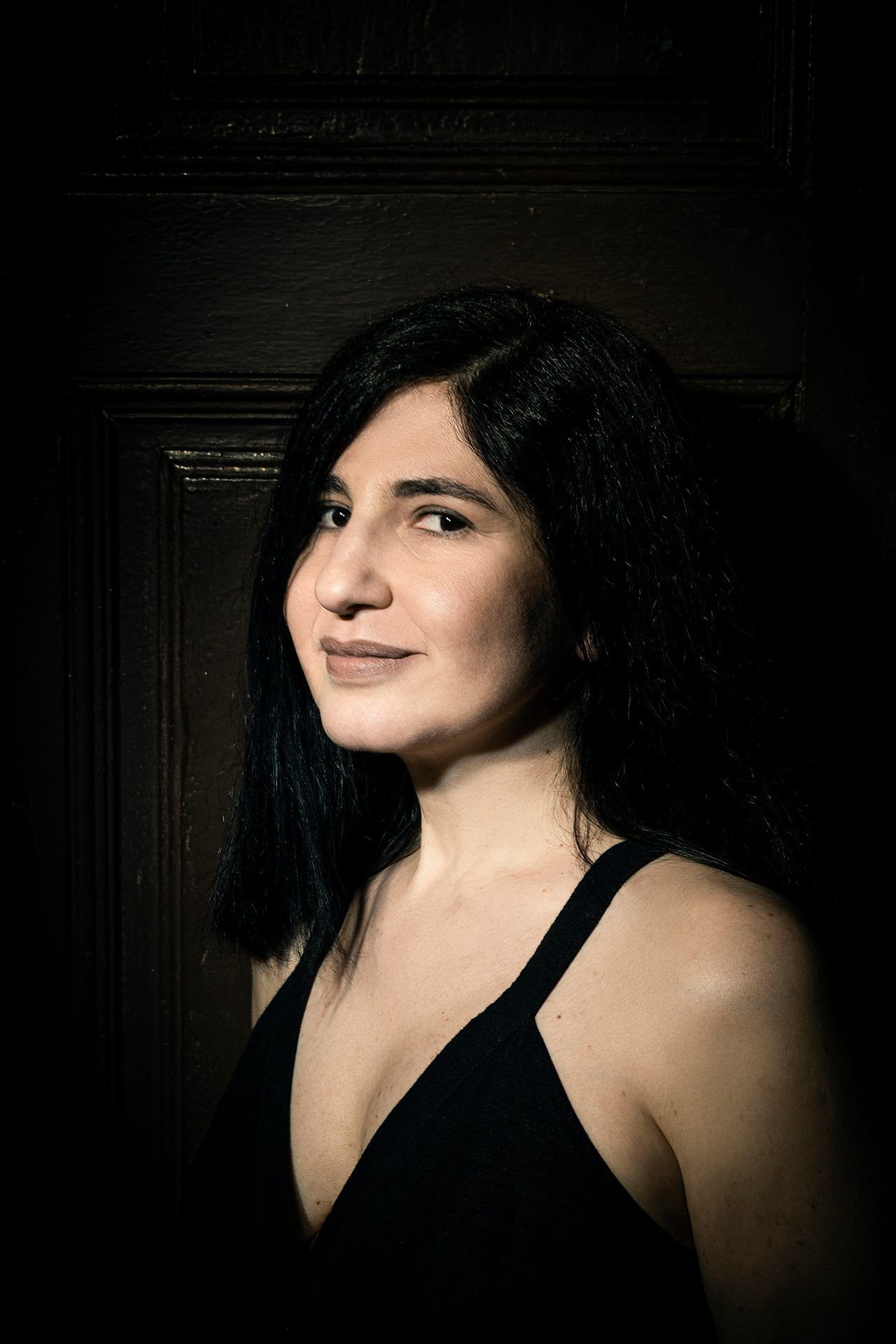
Now an associate professor of art at Wellesley College, Claudia Joscowicz (B.Arch. '91) works as a visual artists in film and video, focusing on landscapes and the urban fabric. Her installations and videos have been seen internationally, and a career highlight includes being the first Bolivian video artist to have their work acquired by the Guggenheim Museum.




